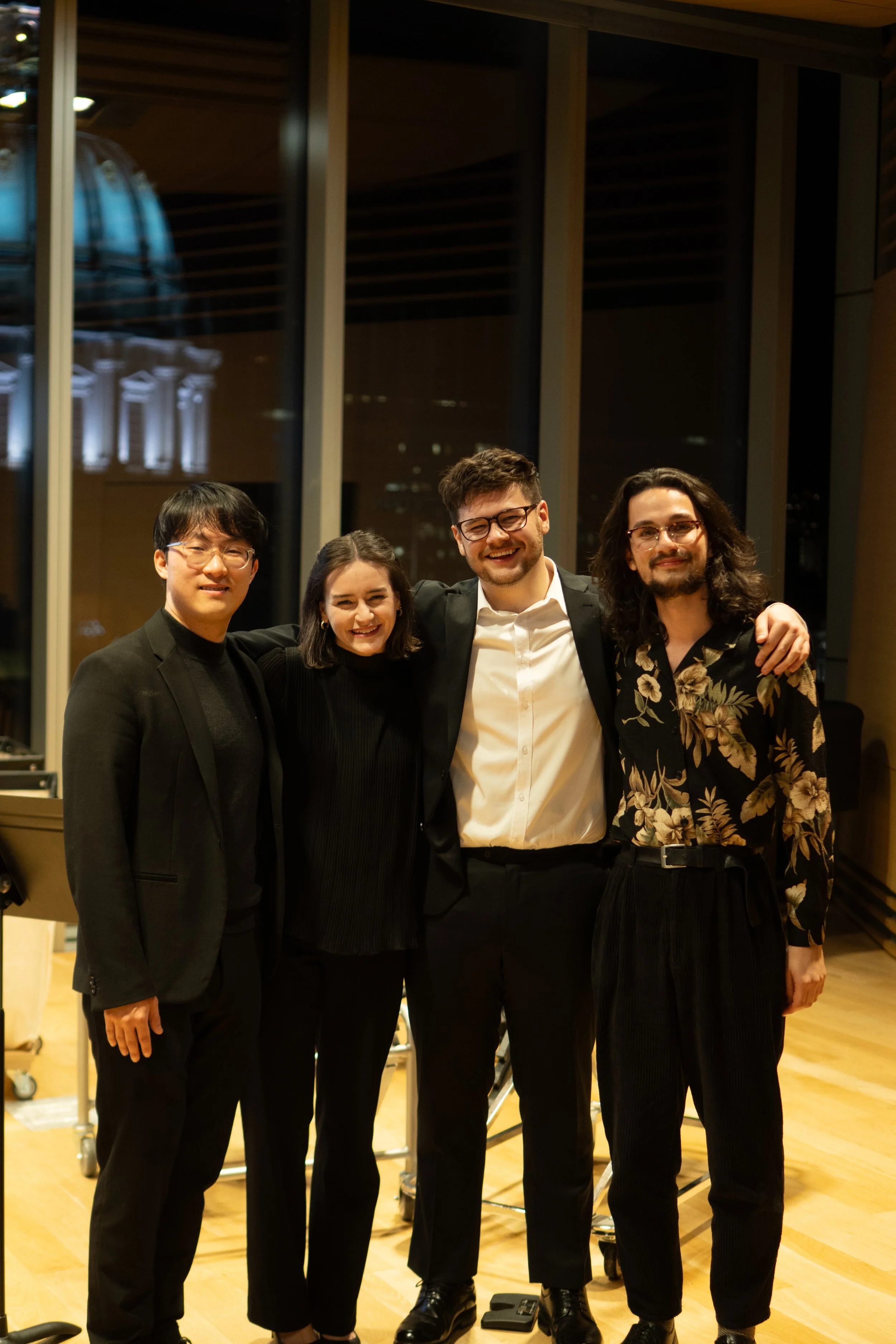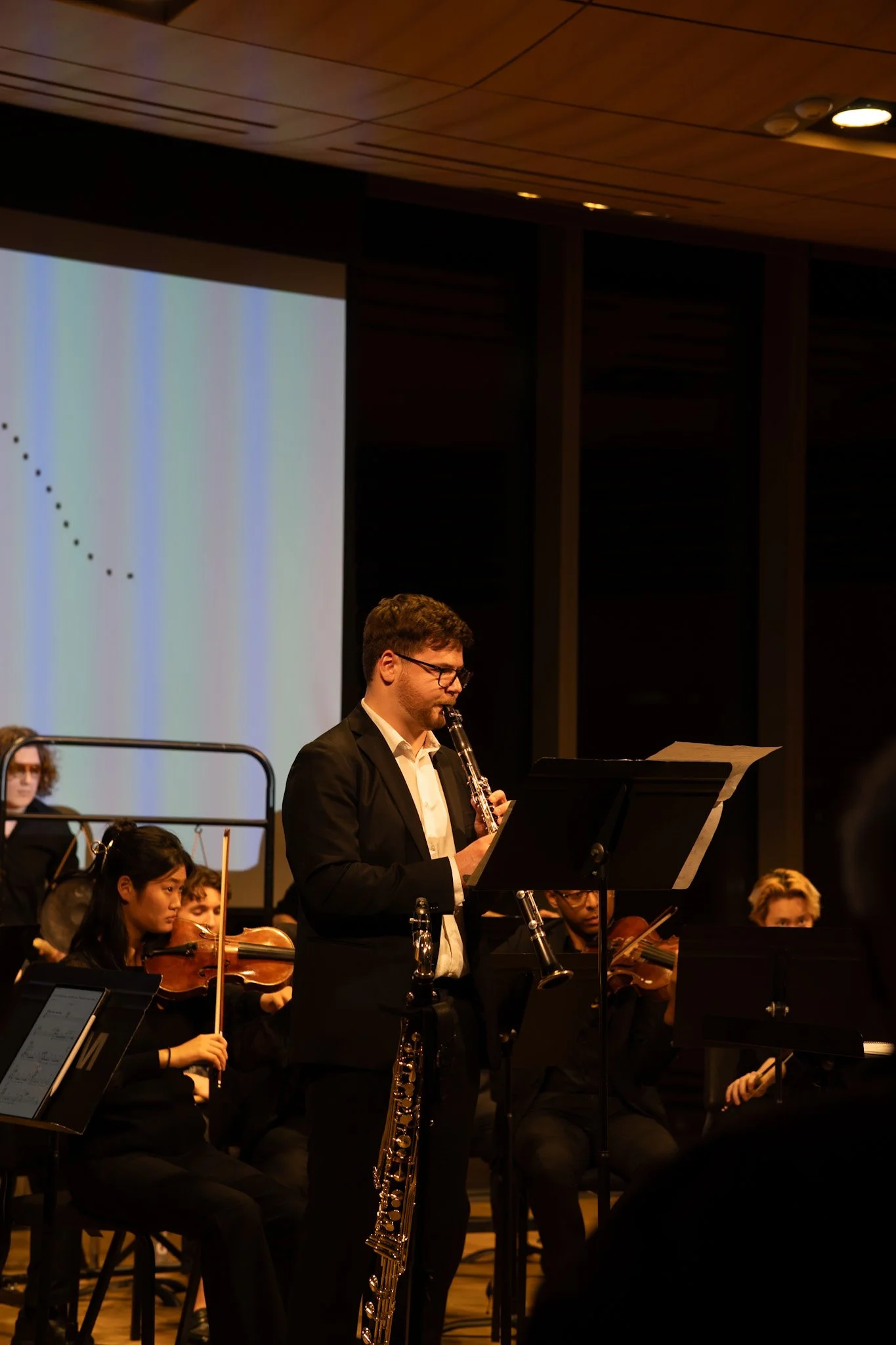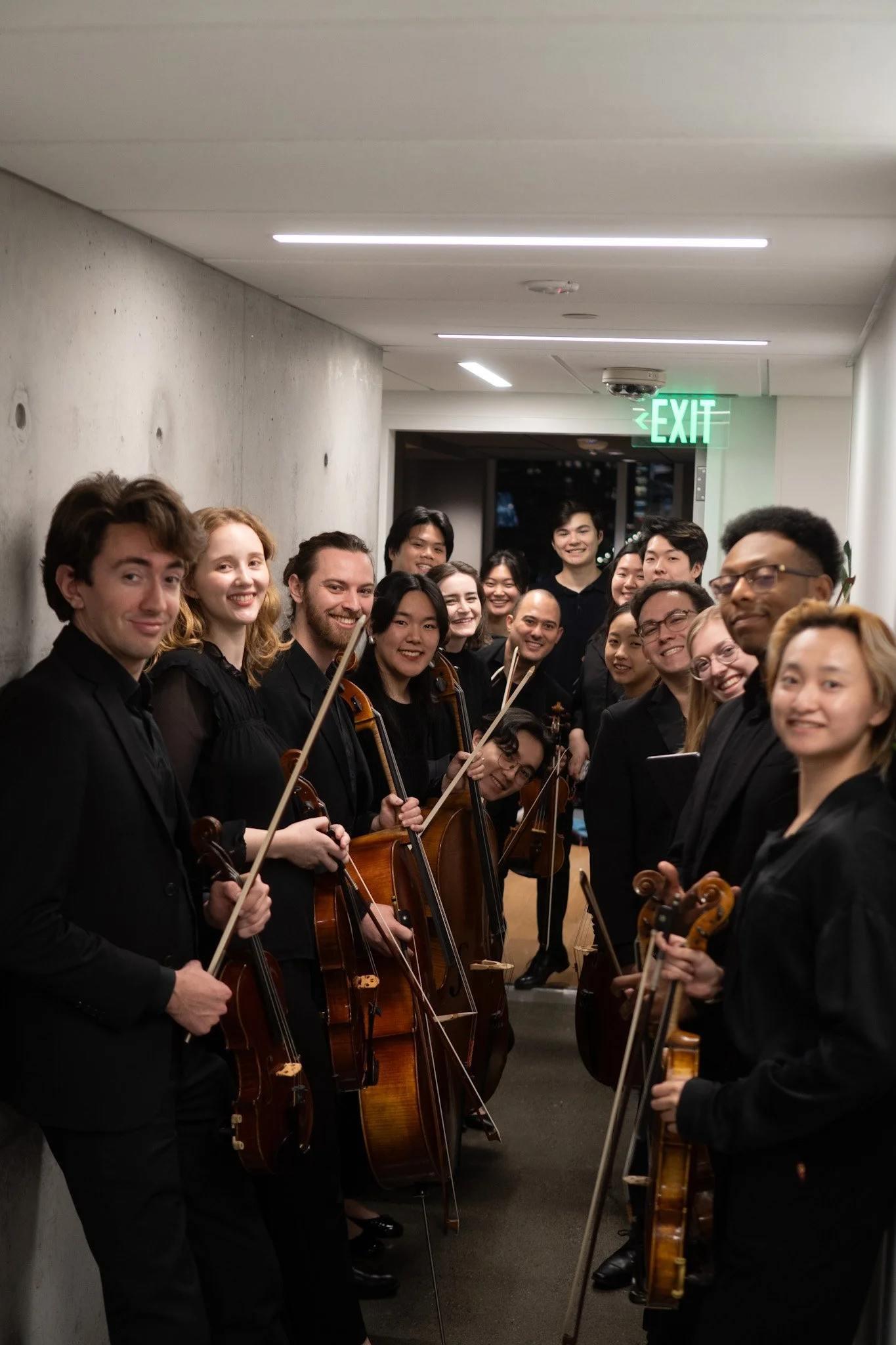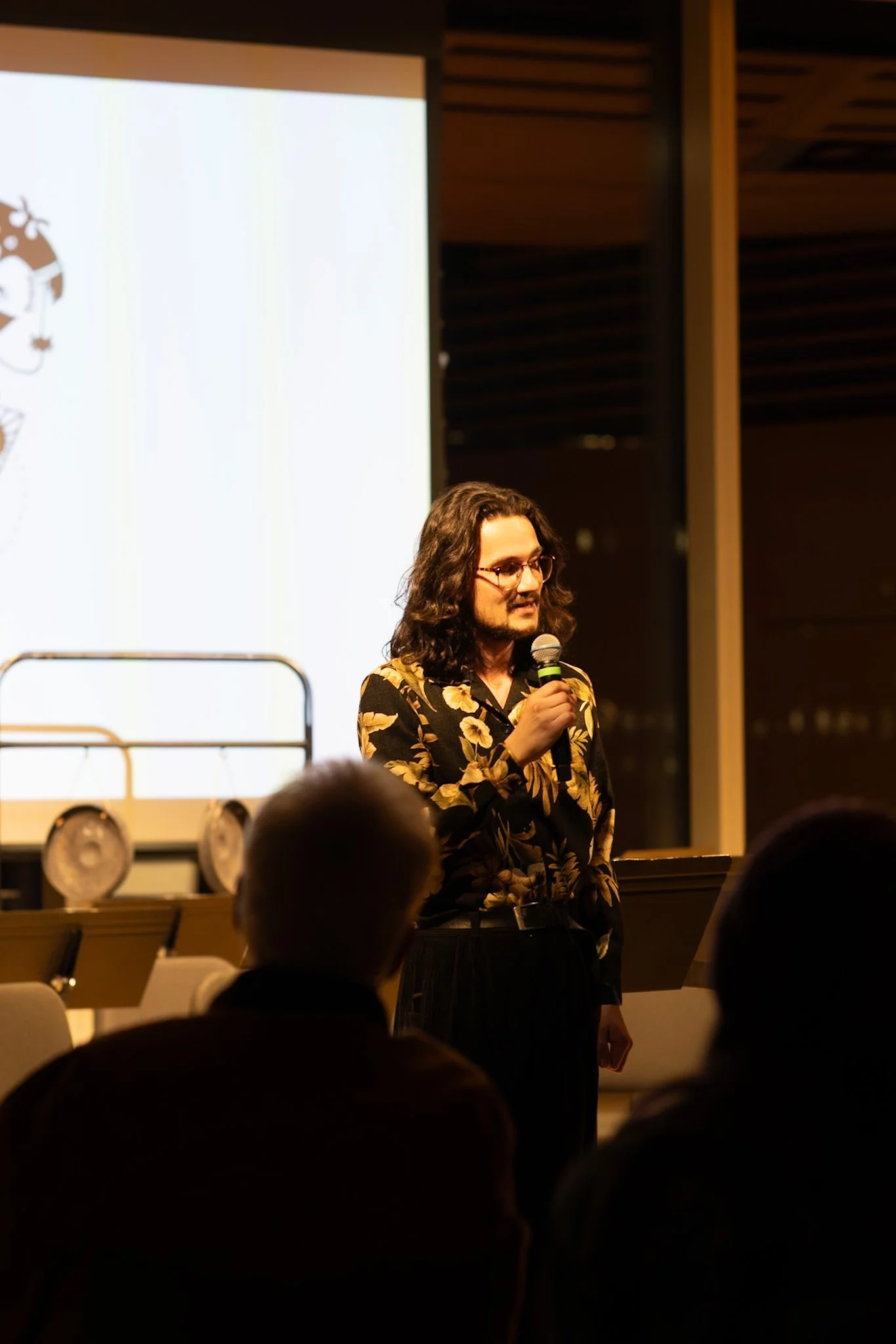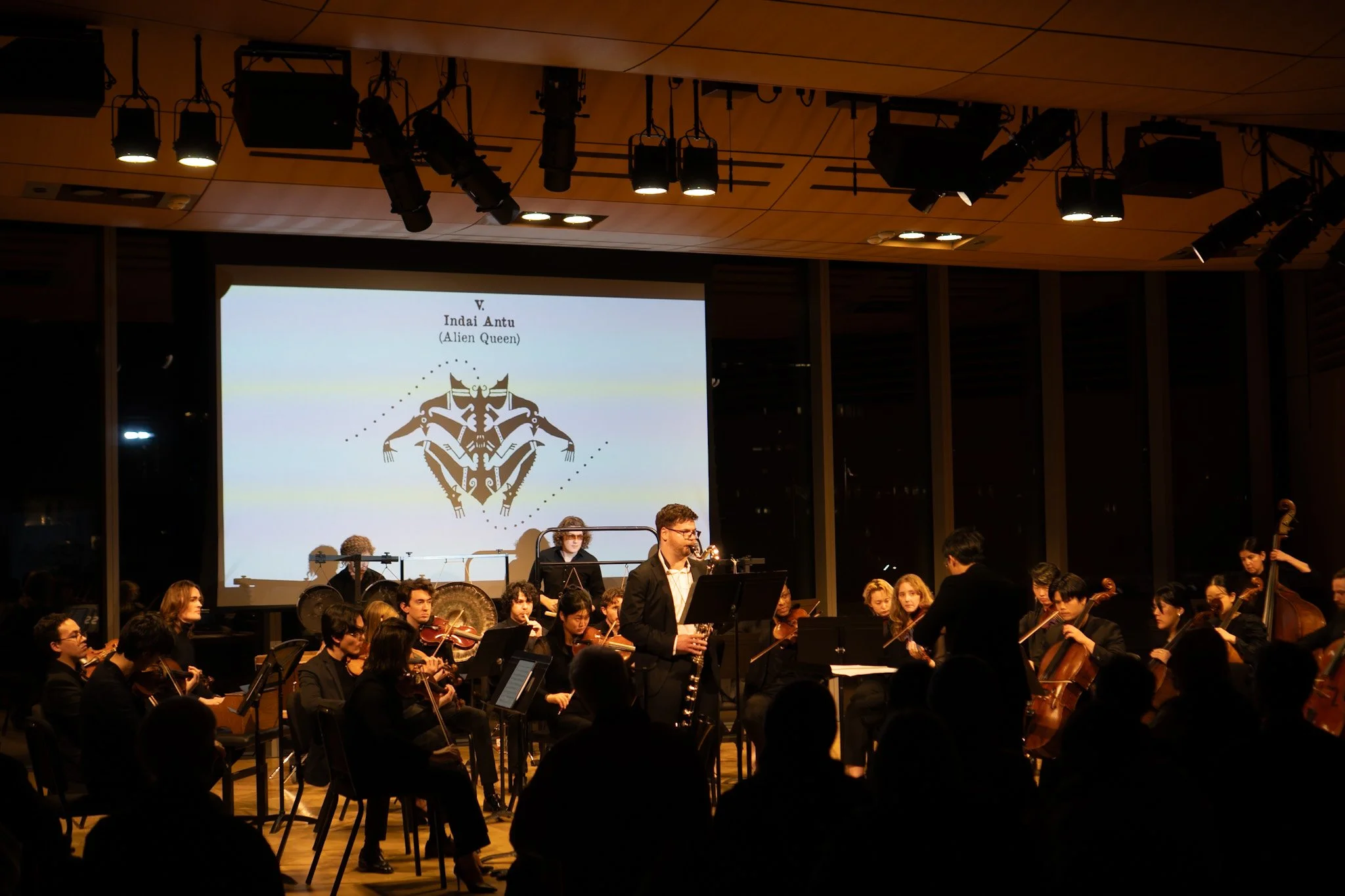
Deathcycle of Ancient Aliens
“Deathcycle of Ancient Aliens,” is the title of an illustration by indigenous Borneo artist T. Bagak. This 5-part illustration illuminates the lifecycle of the alien from Ridley Scott’s 1979 film “Alien,” in the traditional iconography of the Bidayuh people, who T. Bagak is a part of. Each stage is described in English, as well as in the Malay language.
The five stages are as follows:
I: Telo (Egg)
II: Pemberap-Mua (Face-Hugger)
III: Peretak-Dada (Chest-Burster)
IV: Indai (Alien)
V: Indai Antu (Alien Queen)
T. Bagak’s work represents a period in Bornean history in which many indigenous communities were pressured by the Malaysian government to leave their traditional ways of life, and to settle down in cities like Kuching and Sibu. Many city-dwelling natives maintained a deep love and connection to their ancestral traditions, while simultaneously developing an affinity for global culture.
T. Bagak’s style of cultural fusion is irreverent, unflinching, and low-brow; “Alternative art for the altered native.” T. Bagak subverts the mainstream depiction of his ancestor’s art forms, creating graphics with crude lines, drawing from the style of primitive Dayak tattoos. He pairs this with even cruder lines as slogans in the spirit of low-brow attitude.
The Music
I encountered T. Bagak’s works while I was living in Bau, Sarawak, studying the music of the Kenyah people. His piece “Deathcycle of Ancient Aliens,” immediately caught my attention as having an enigmatic narrative progression, and a subtle musicality. I started setting it to music two years ago, but none of my settings felt right until Liam, clarinetist for the Magari Ensemble, and Natalie, director of the Magari ensemble, approached me with an offer to collaborate.
The first movement, “Egg,” is tempo-less. The strings move in and out of dense, chromatic clusters, evoking the disgusting gestation of an alien egg. The second movement, “Face-Hugger,” is a slow movement, in which we can hear the skittering movements of the young Xenomorph before it attaches itself to a host. We will also hear the alien’s development, as it prepares to burst fourth from its host, in the form of an extended pentatonic cannon.
In the third movement, “Chest-Burster,” we hear the alien, represented through the clarinet solo, coming into full form. It begins with the moment of expulsion, and ends with the alien’s sickening celebration of its own existence. The fourth movement, “Alien,” is an exaltation of the Xenomorph. It has come into full form.(Gross!) The last movement, “Alien Queen,” is a dance.
In my music, I make heavy use of “primitive instruments.” These are toy flutes, slide whistles, toy piano and toy drums. I employ these, because I believe there are many objects in our daily surroundings, which we routinely look over, but which carry the power to tell stories.
Instruments which are made crudely, simply, without any care for established cultural traditions, develop their own voices, separate from human creation. Bamboo flutes which are mass-produced and sold in tourist markets carry little human intentionality. The voice they have is an emergent property of nature, and chance.
I hope you enjoy this performance of “Deathcycle of Ancient Aliens.” I’d like extend a special thank you to Natalie Boberg and Liam Cameron, who commissioned this project. Their hard work and enthusiasm made this possible. I’d also like to thank all of the incredible musicians who came together to tell this story. It has been a tremendous honor to work with every one of you.
Thank you, and enjoy.
Malama,
Rogan Kahale Tinsley
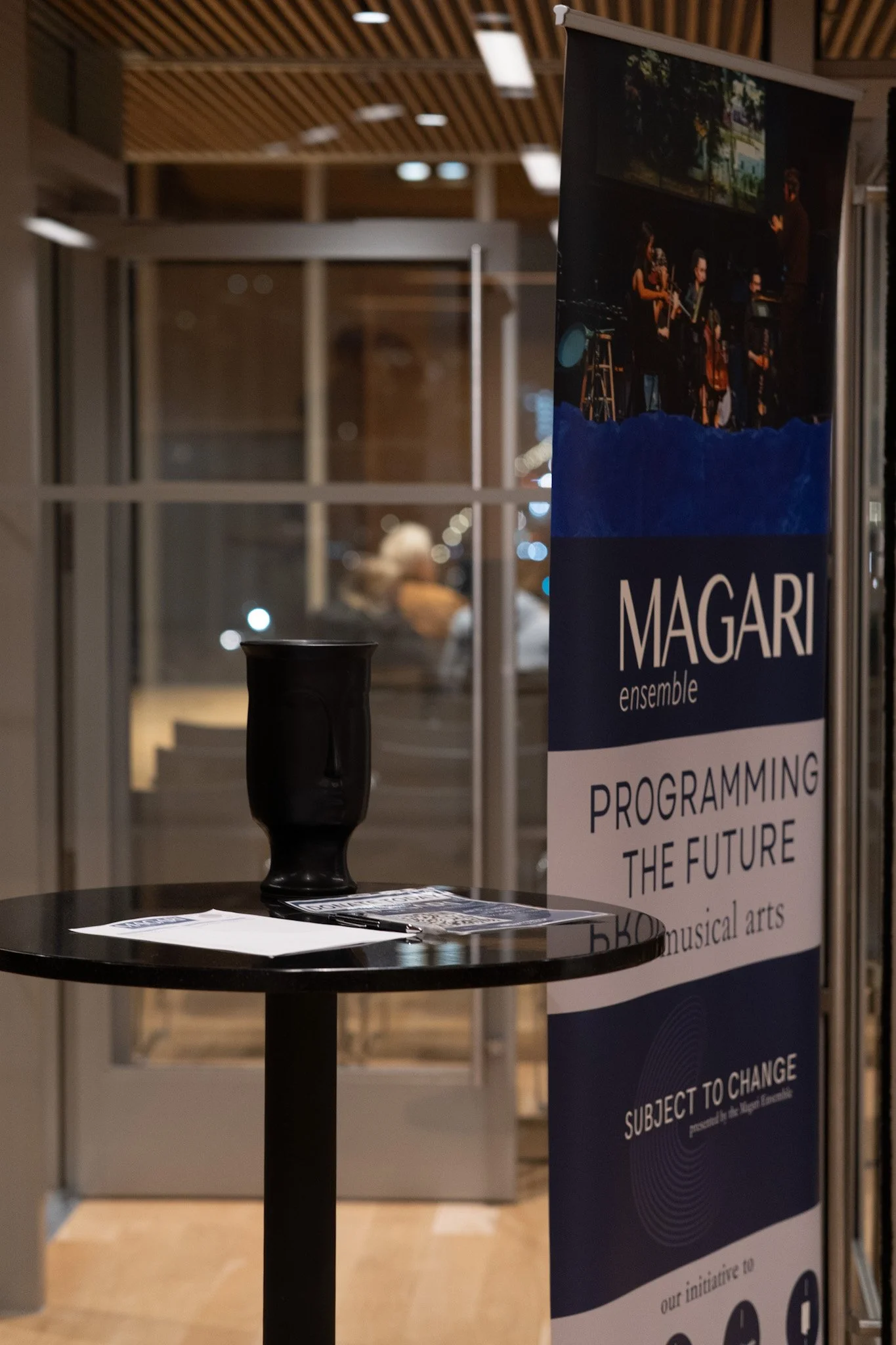
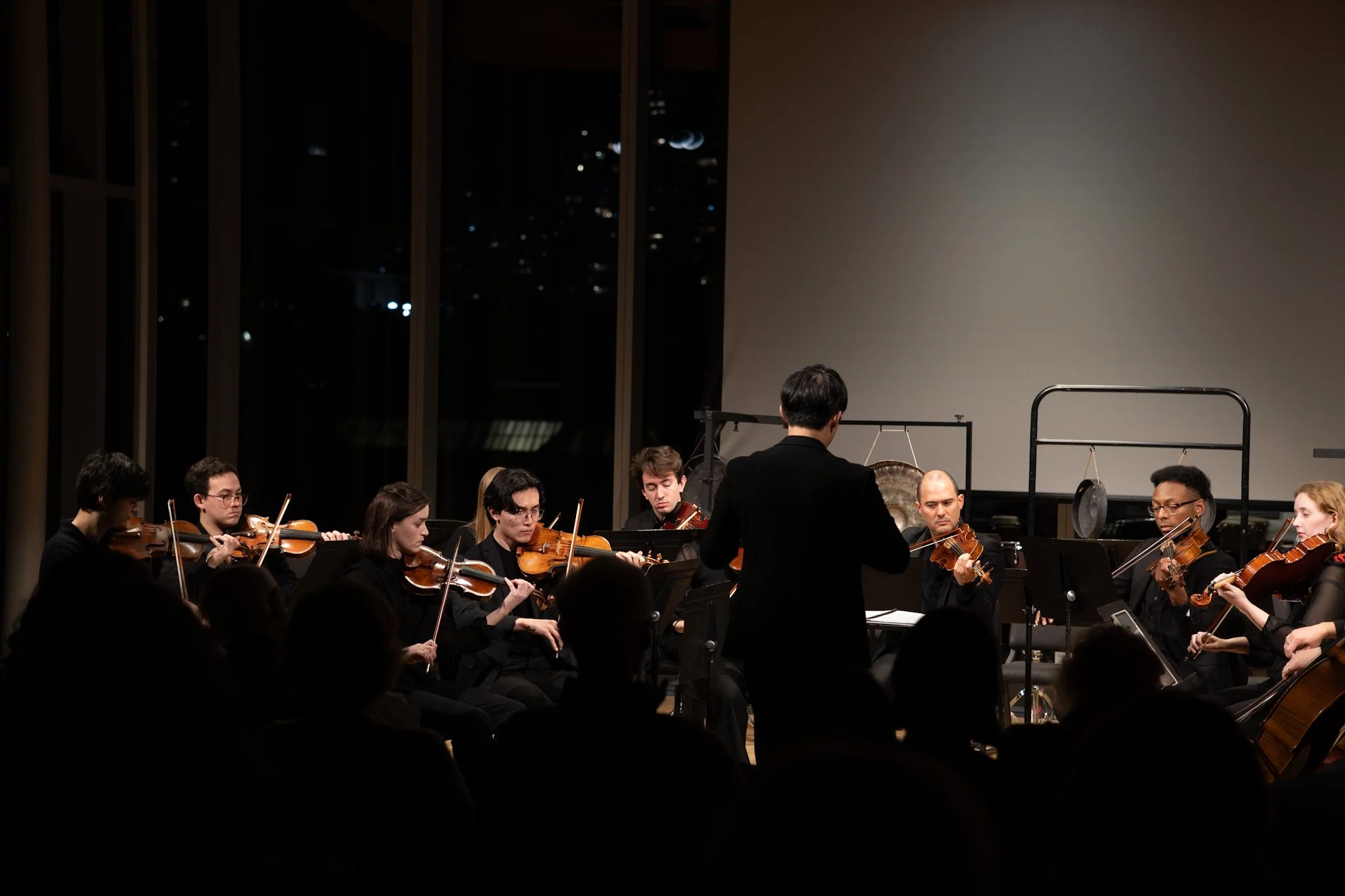
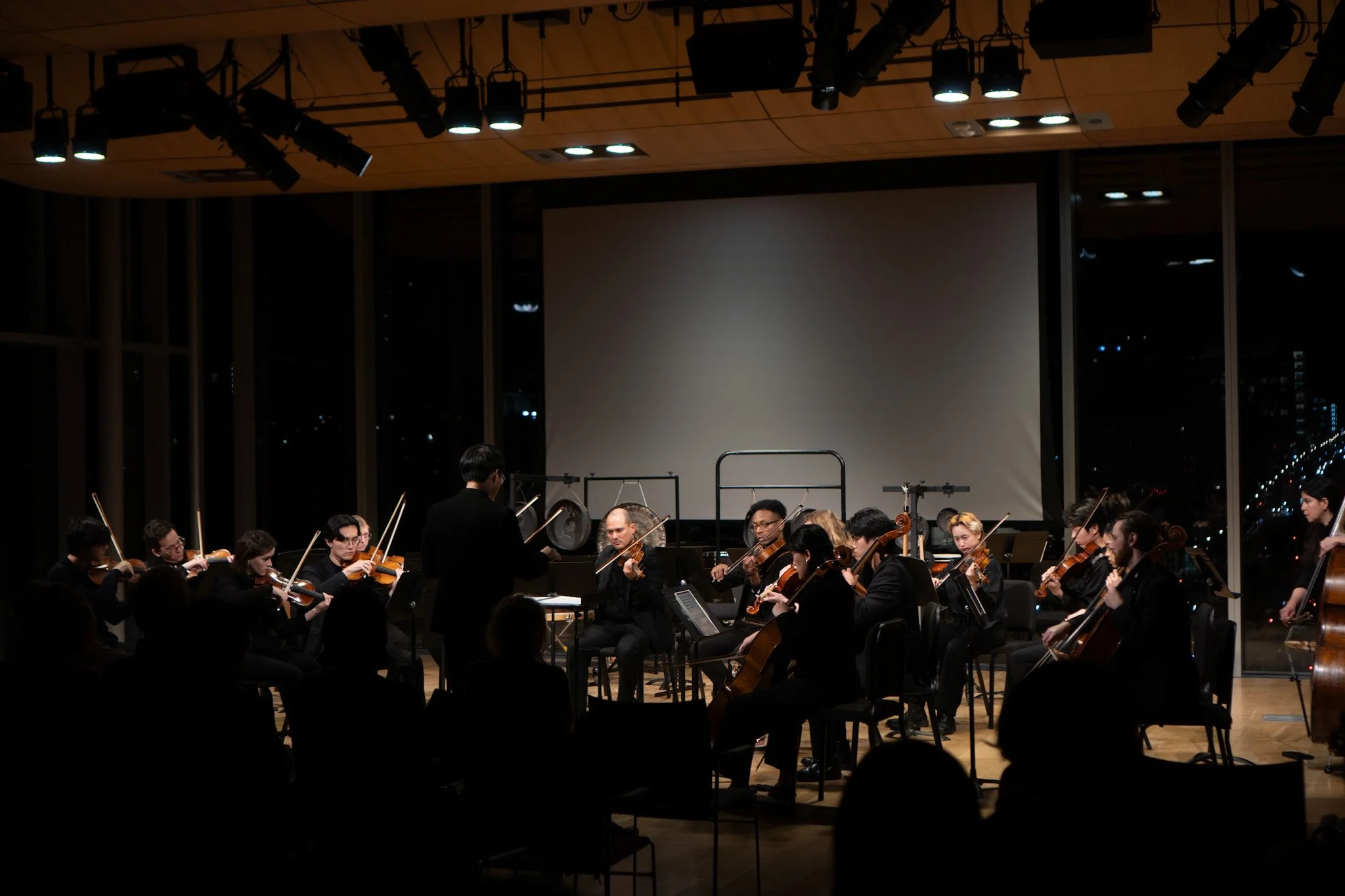
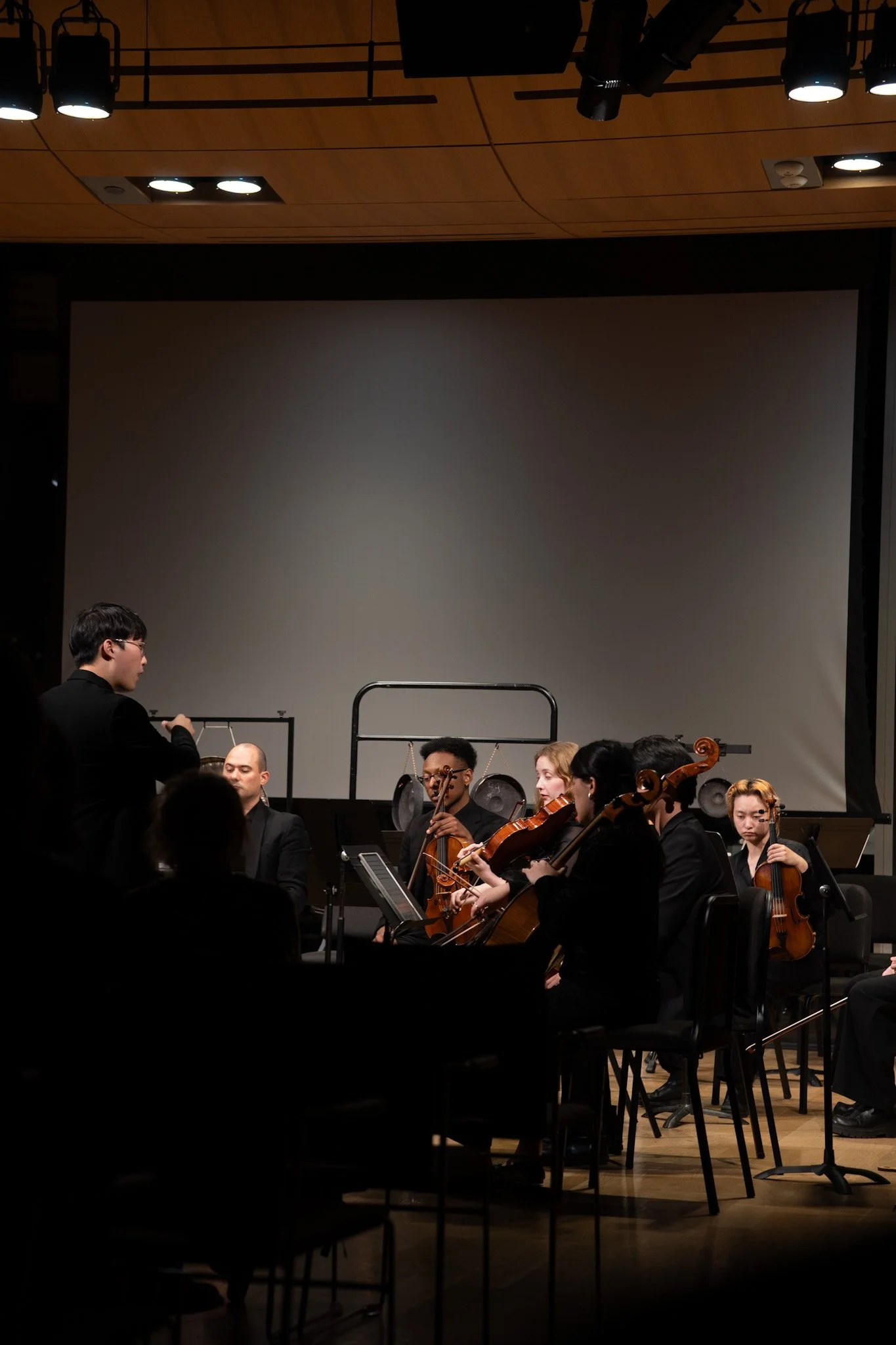
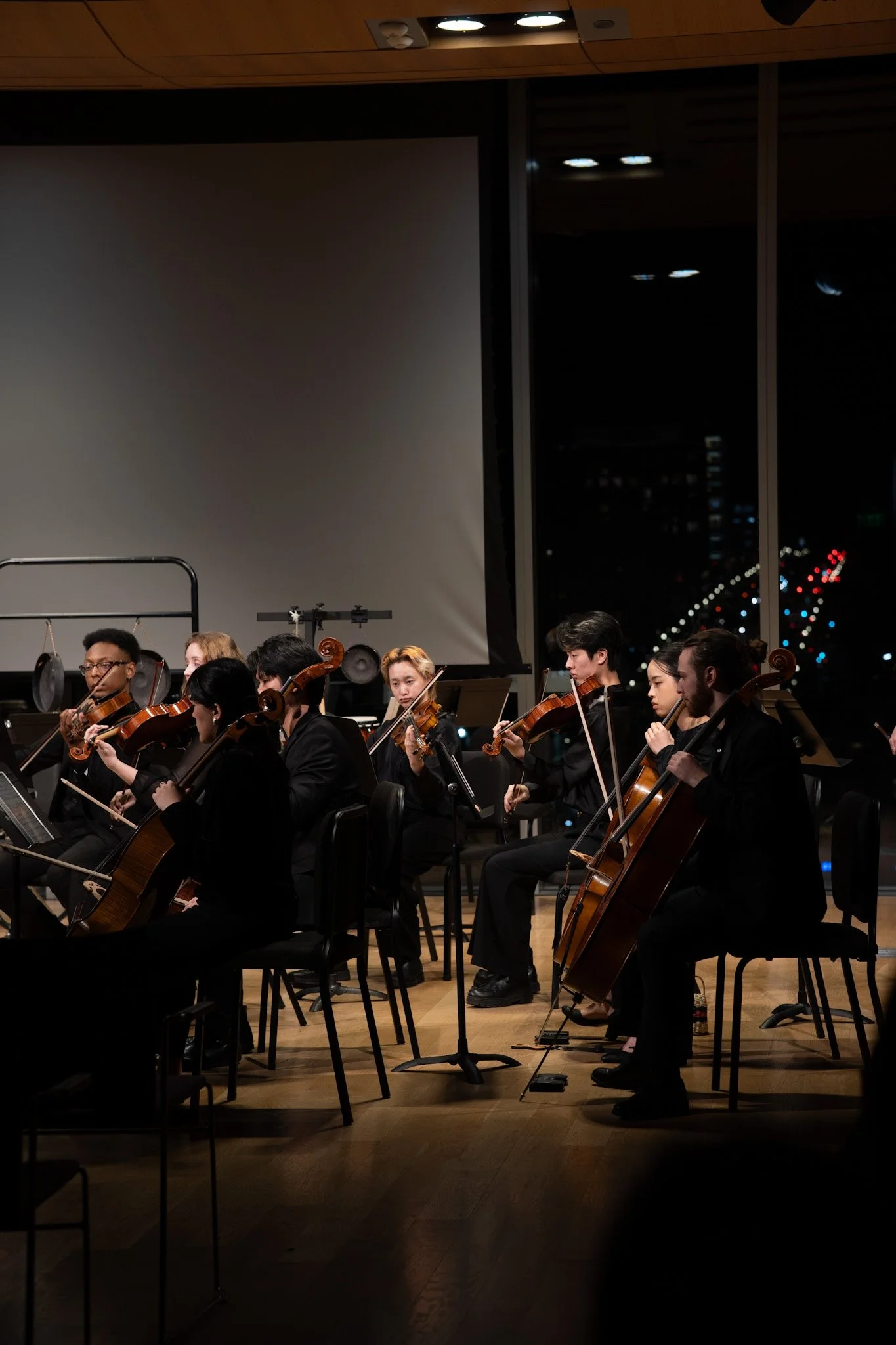
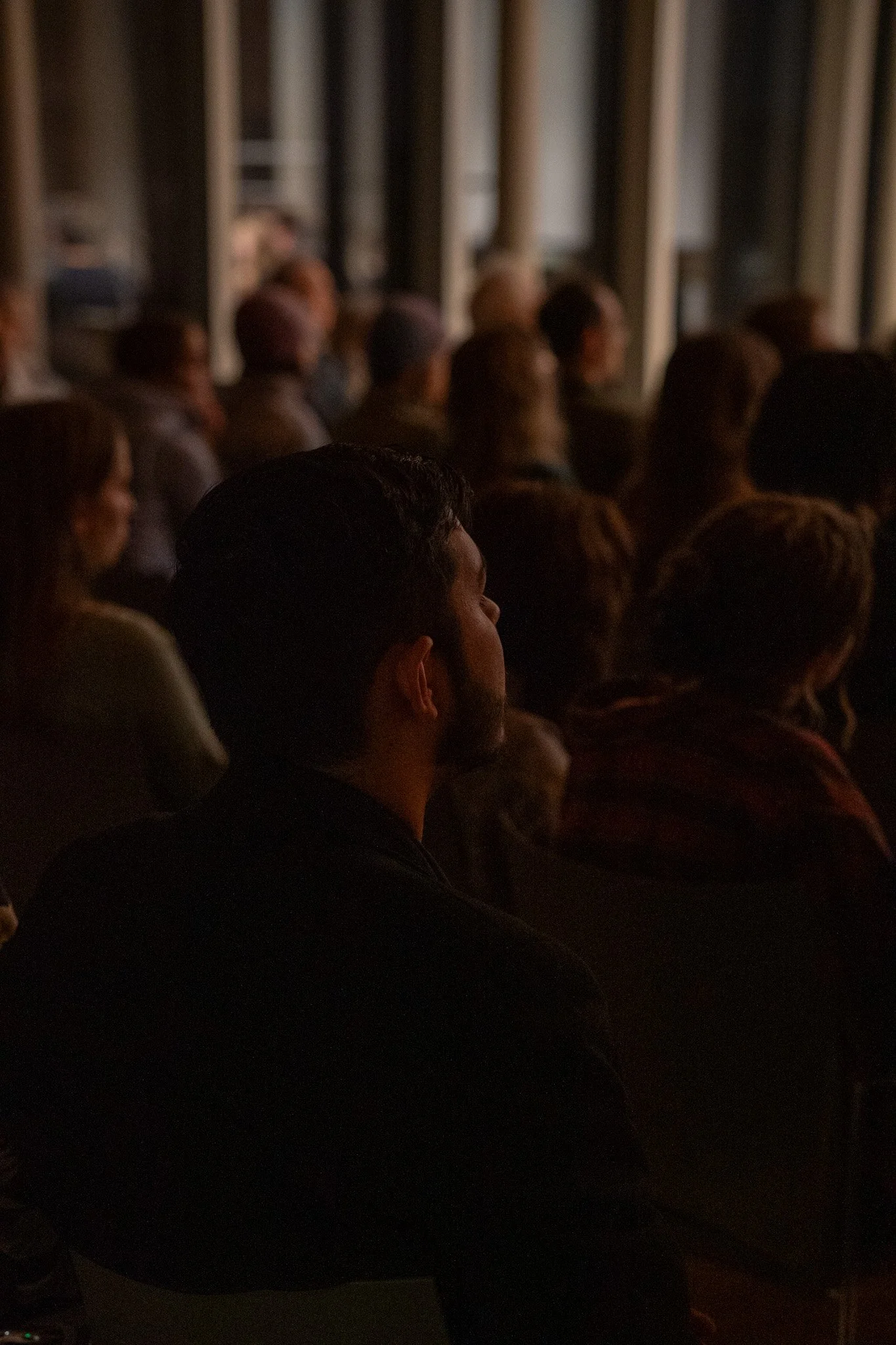

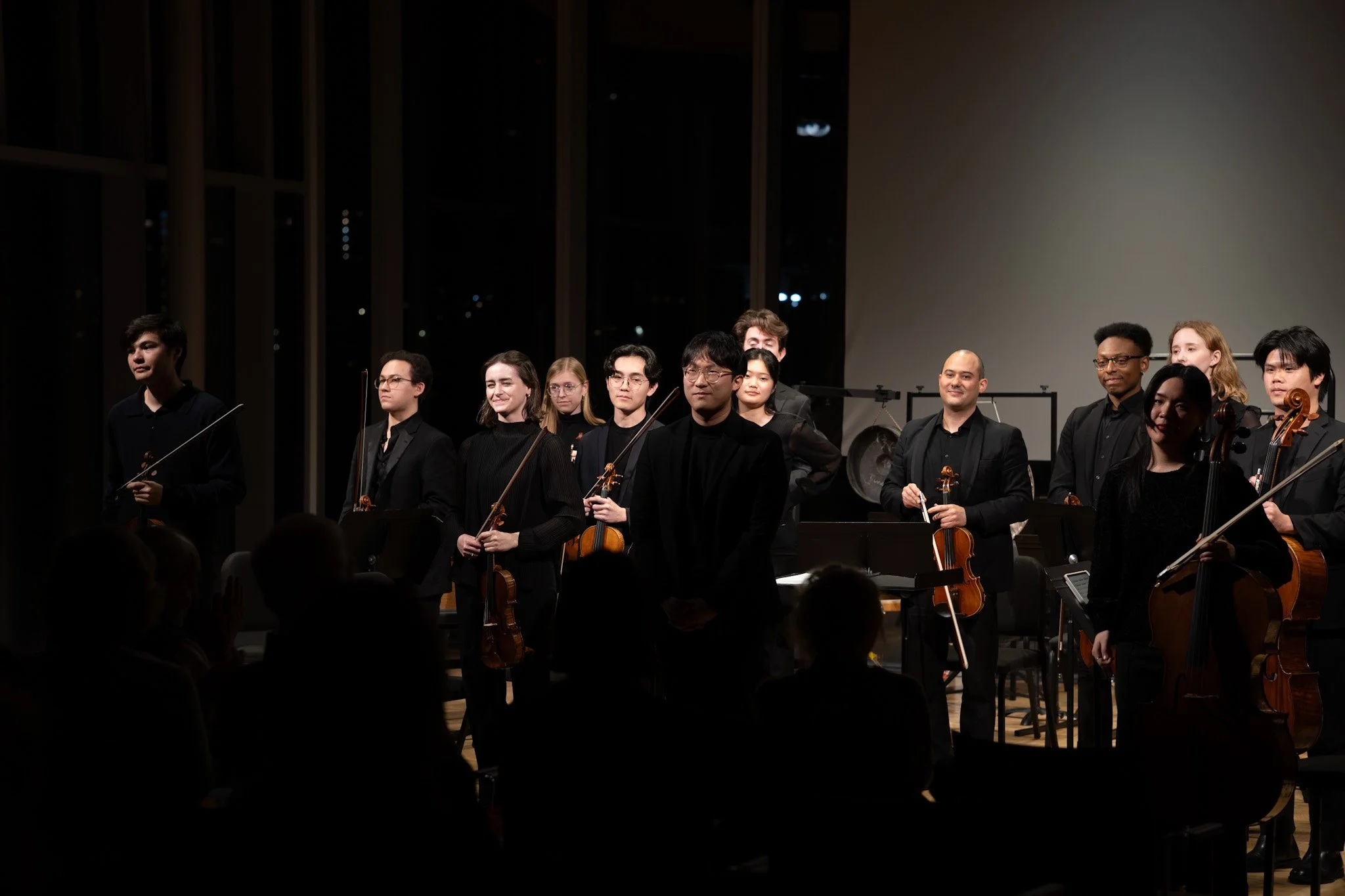
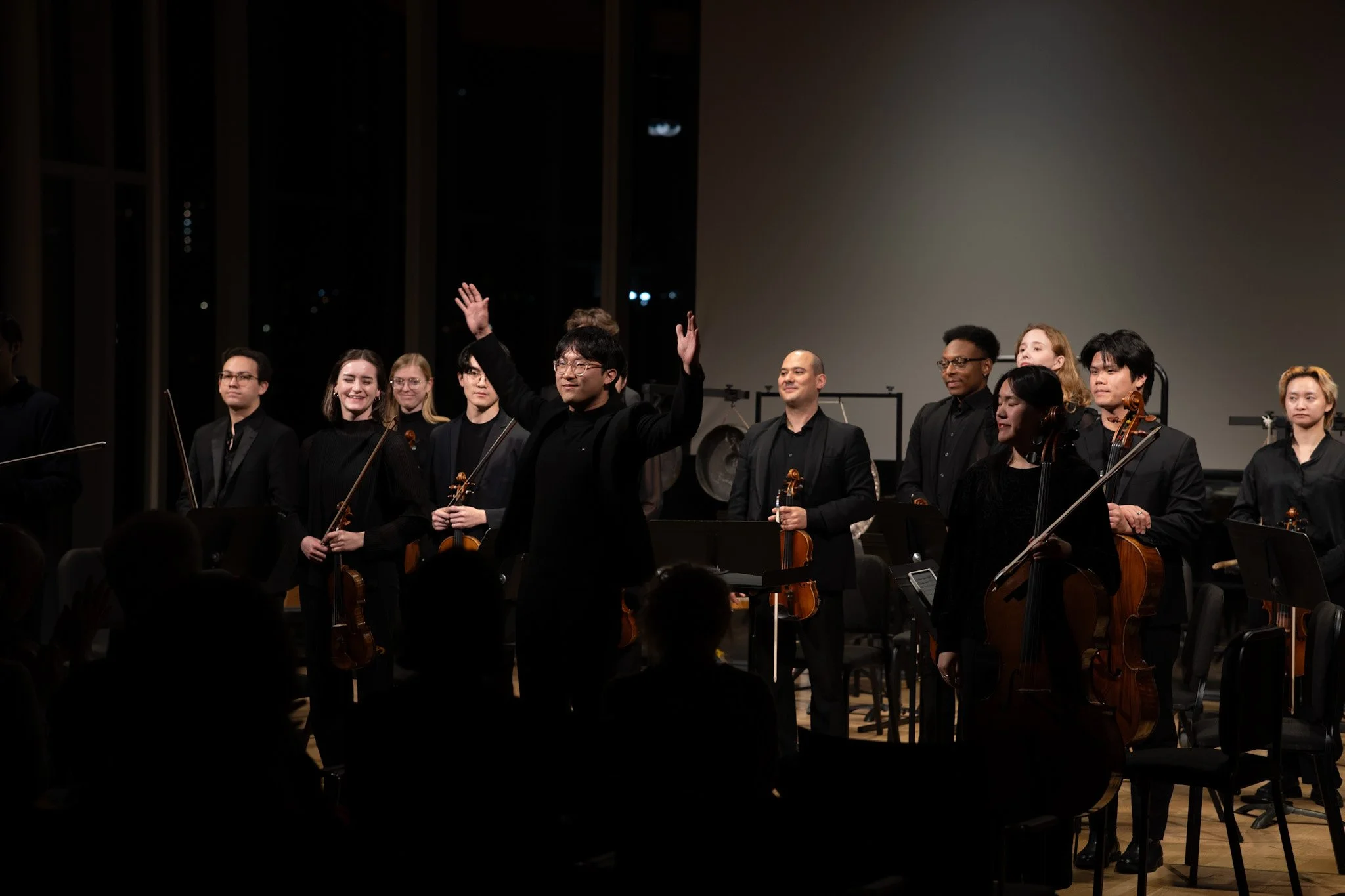
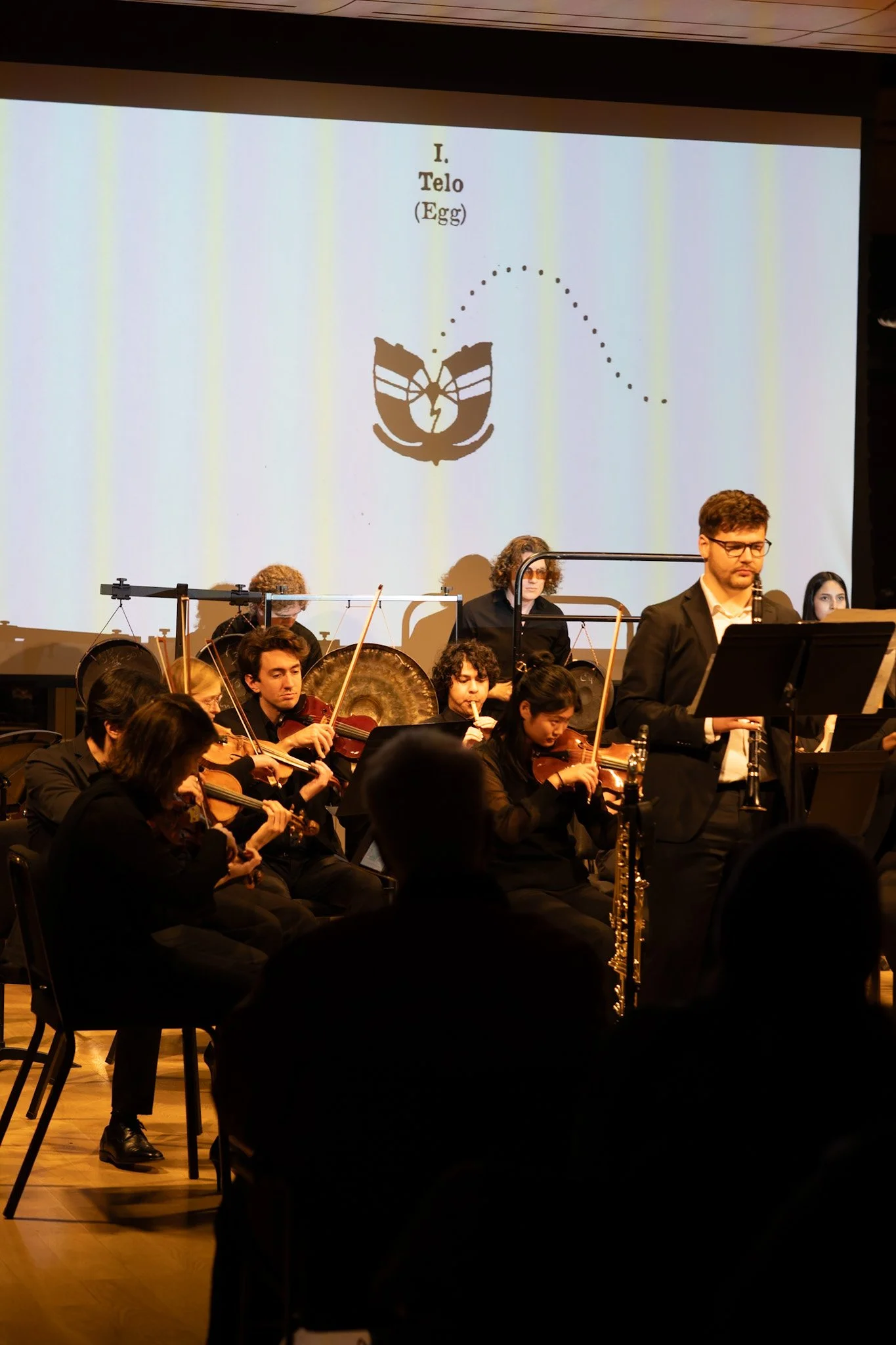
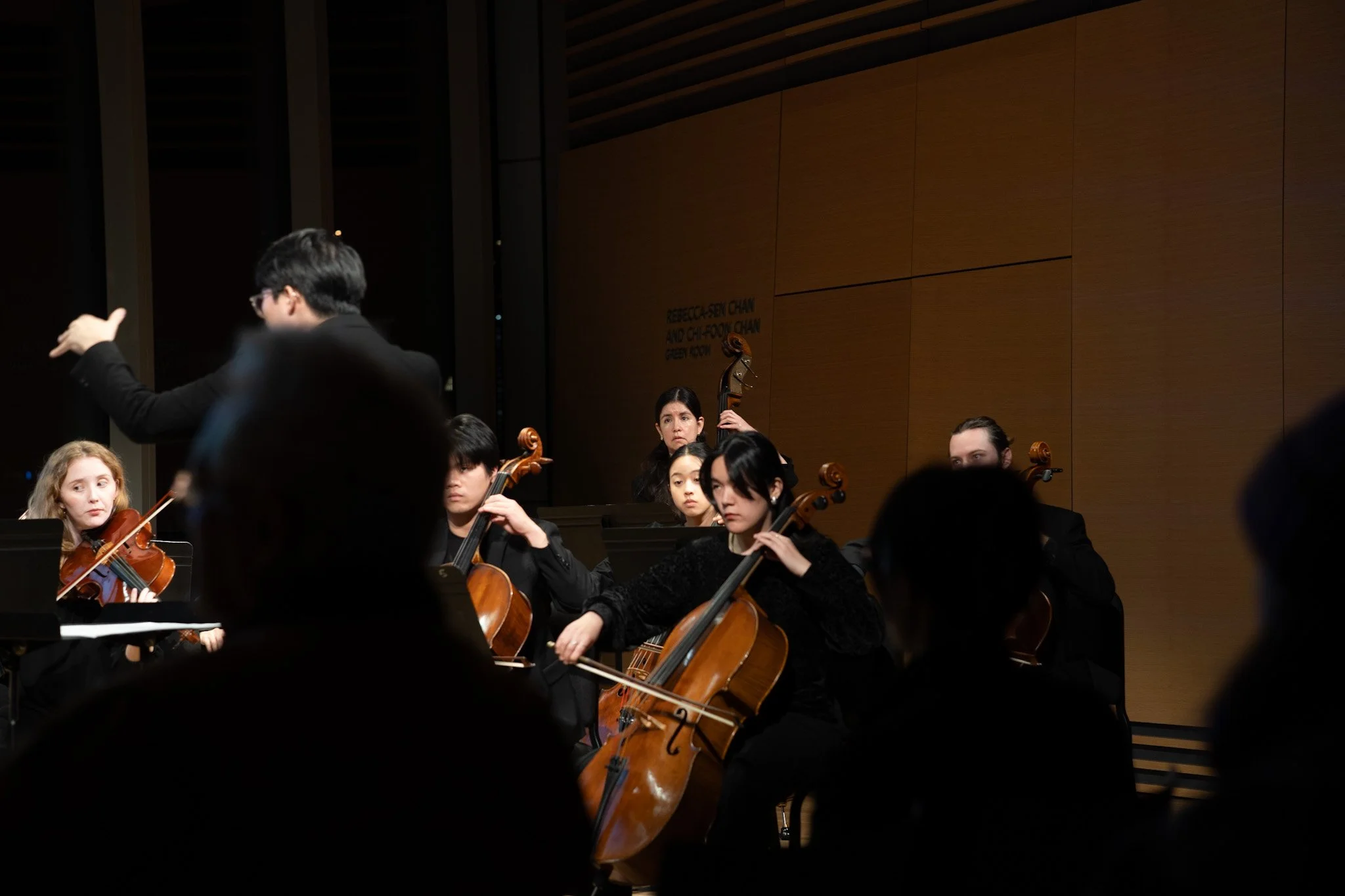
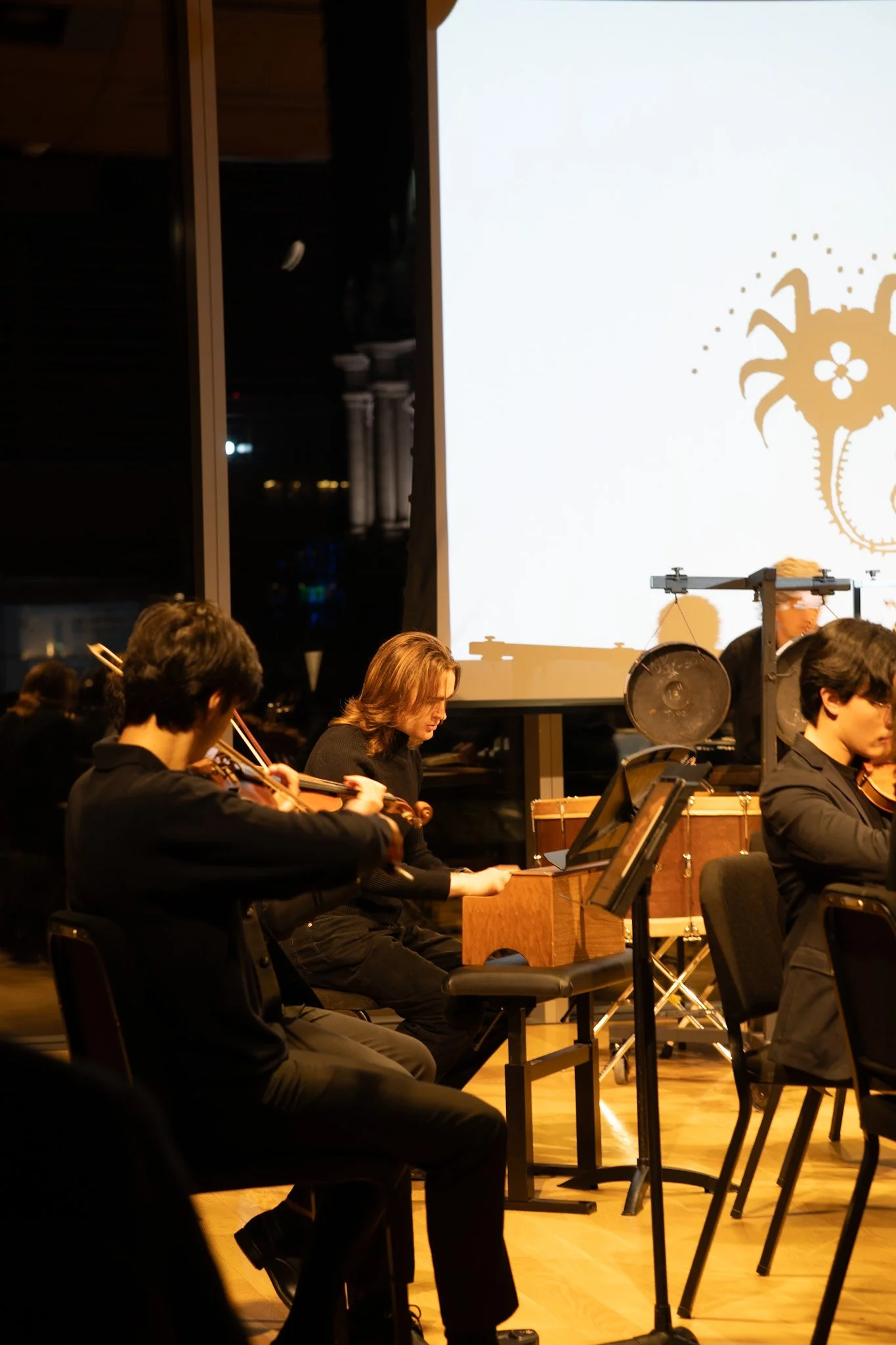
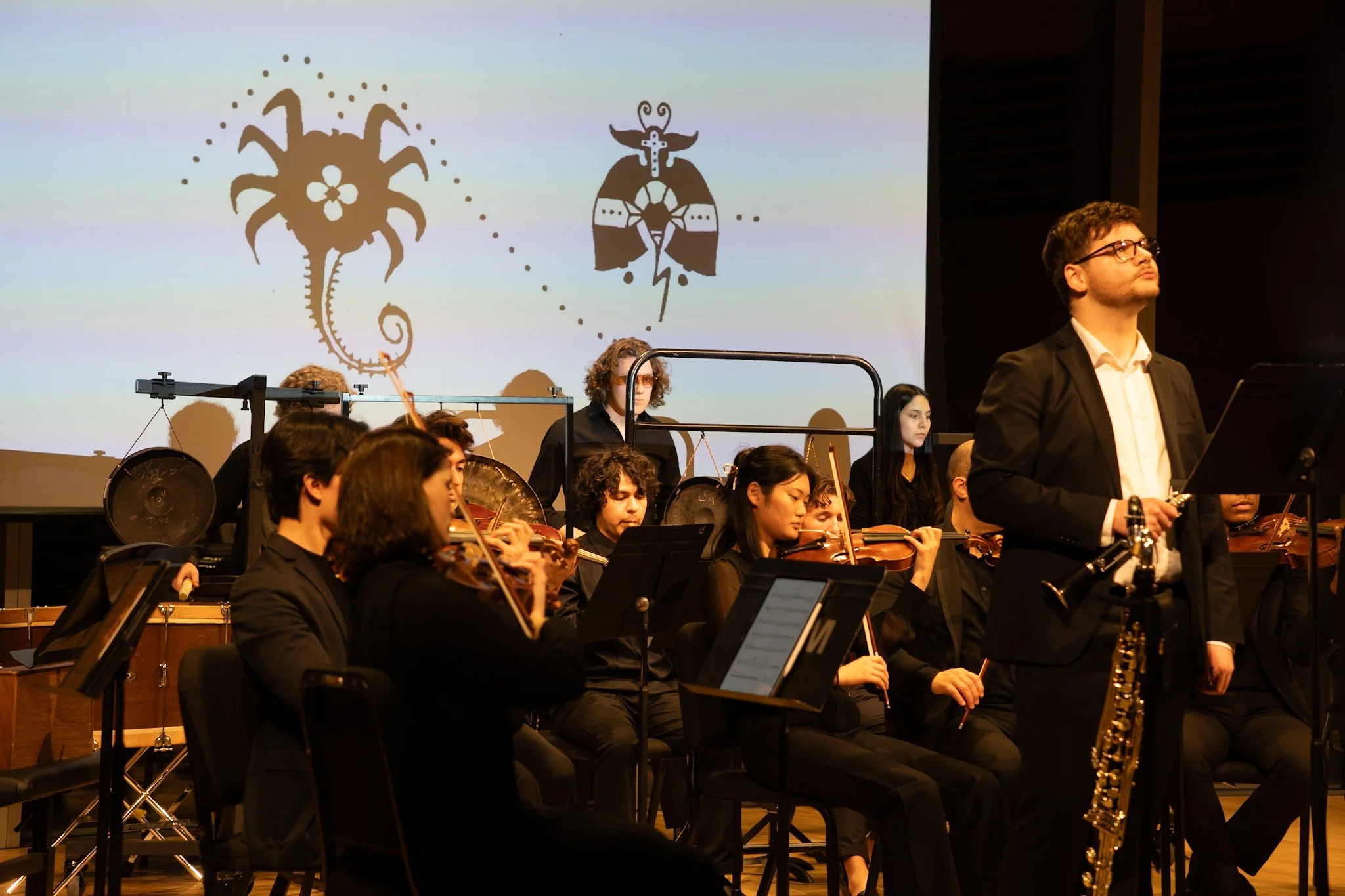
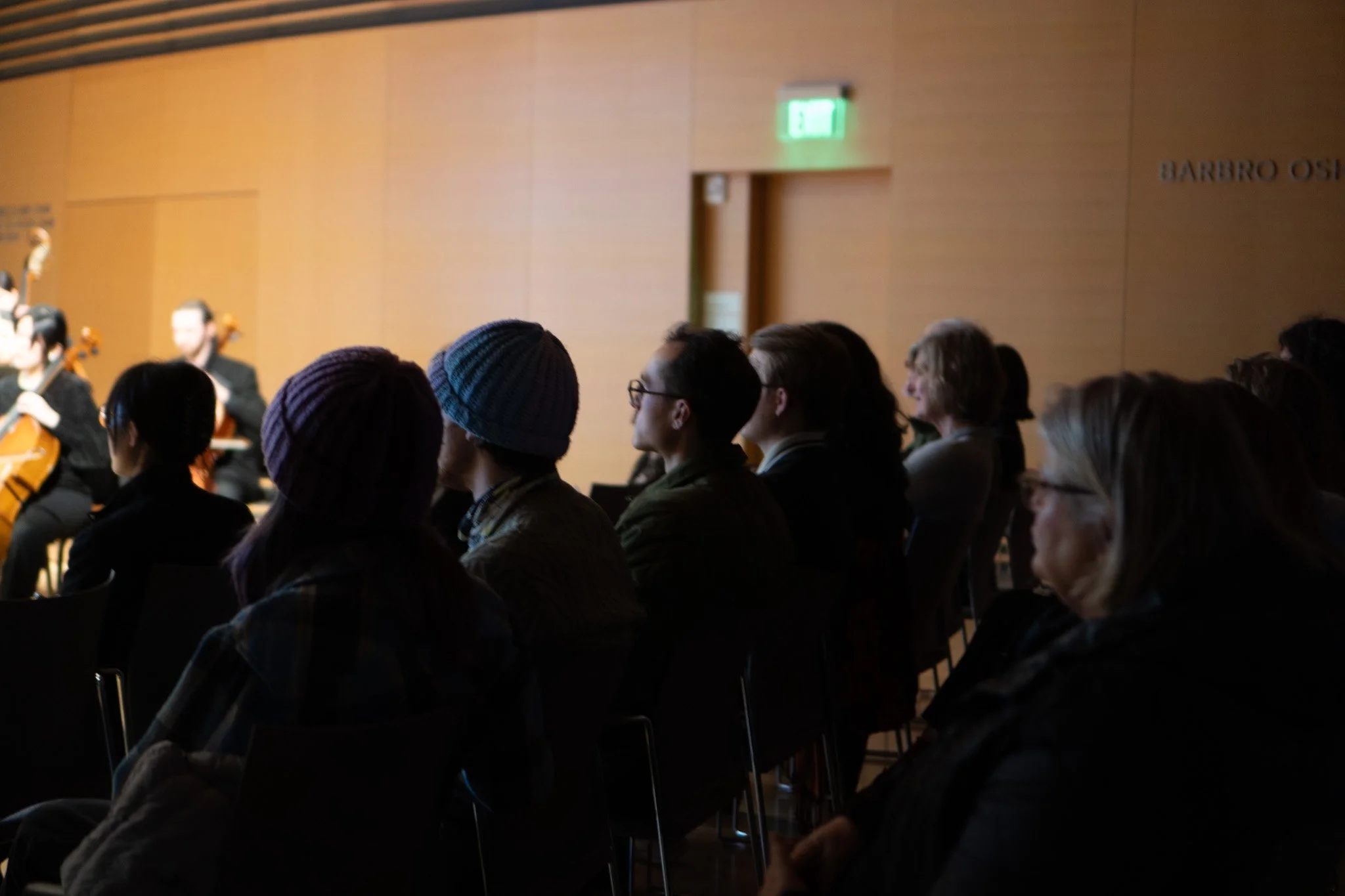
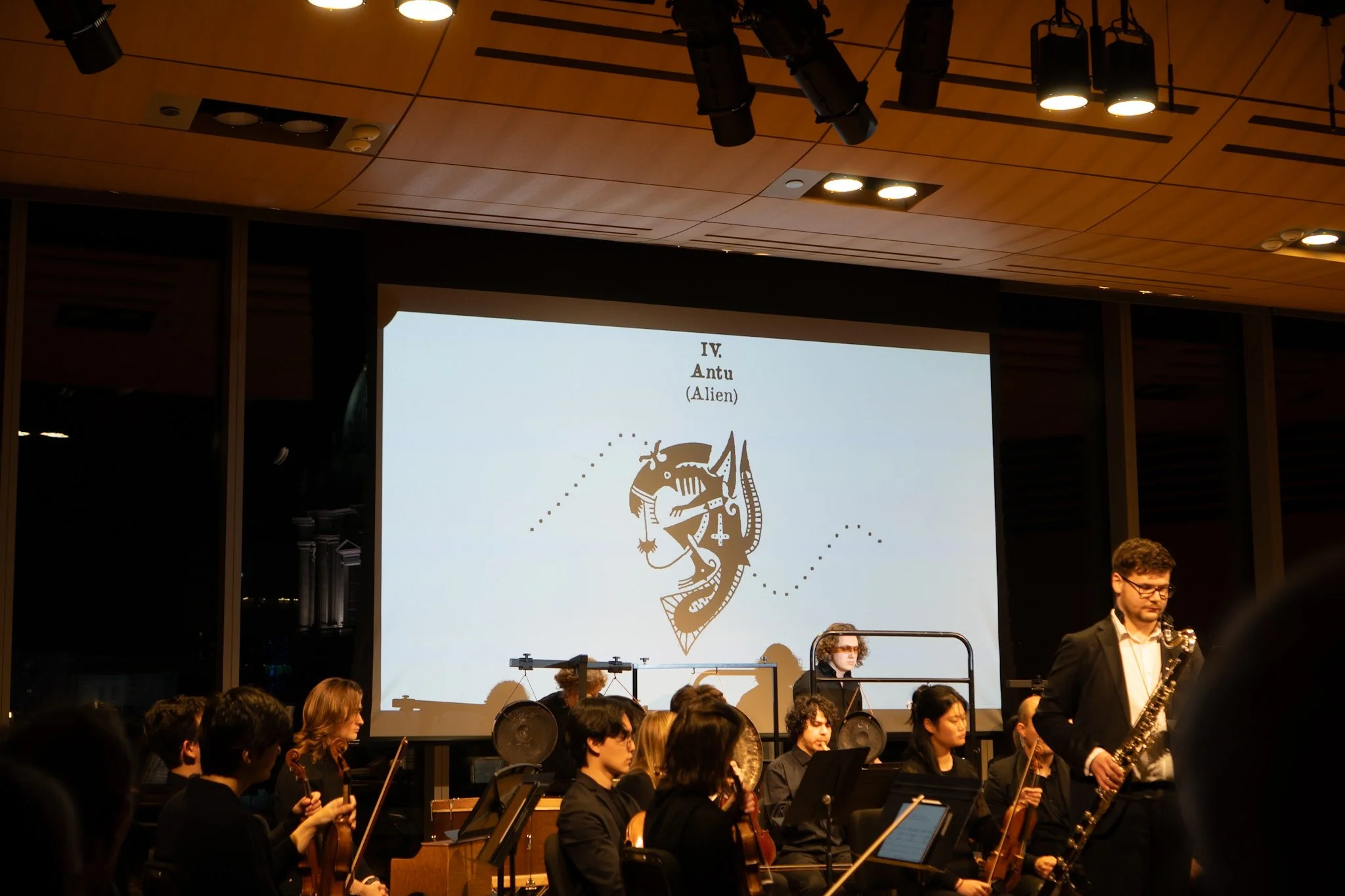
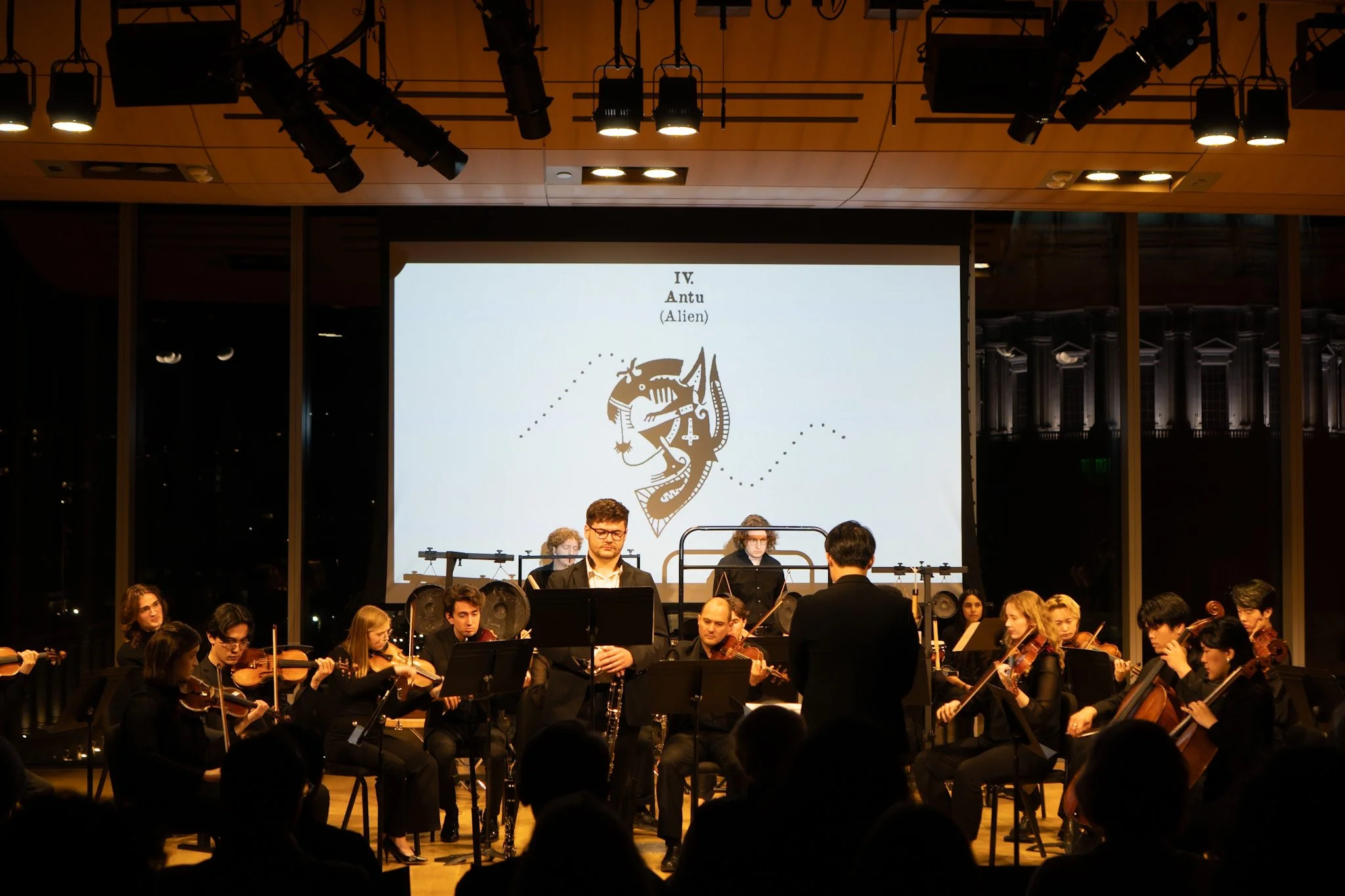
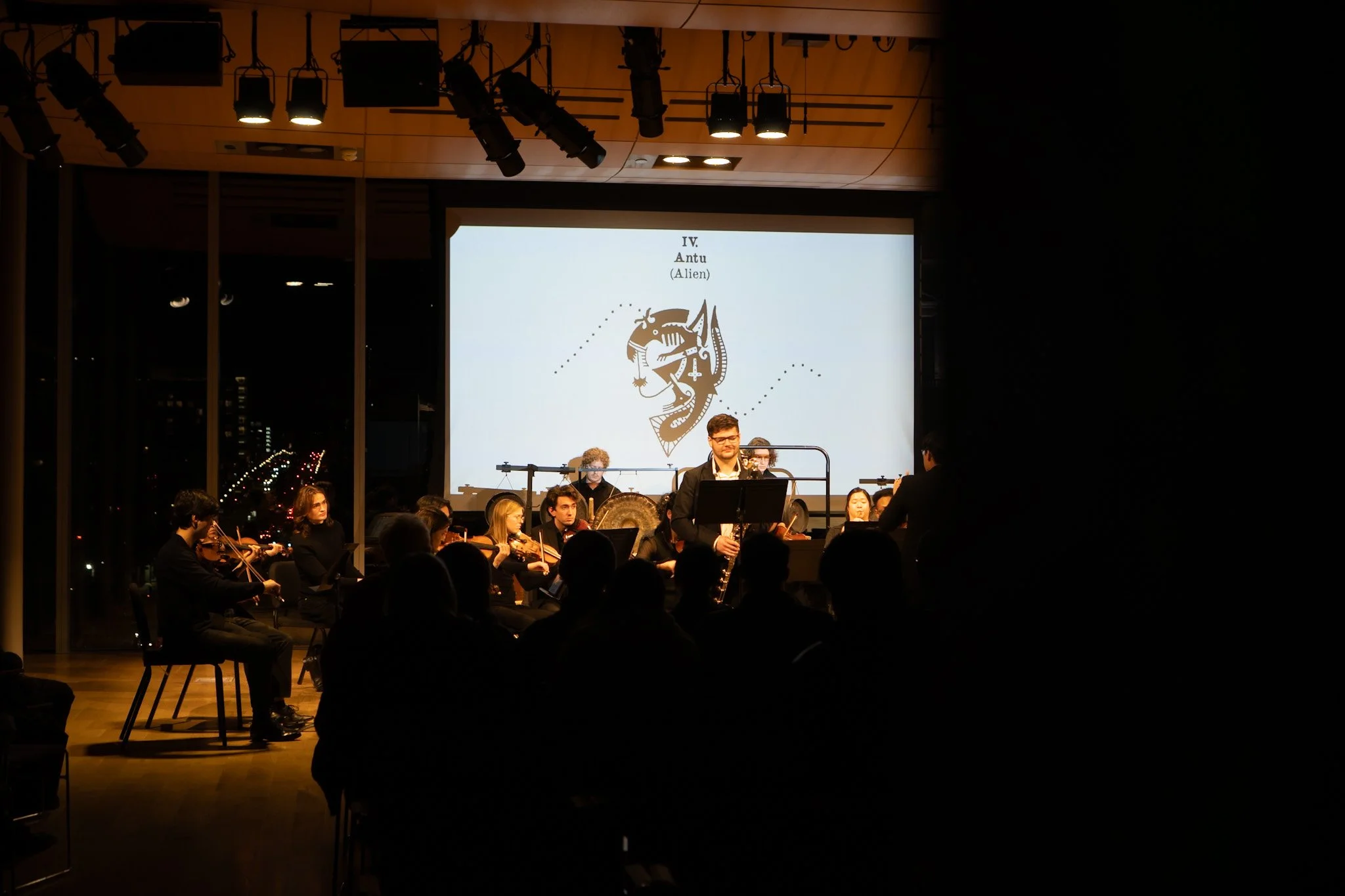
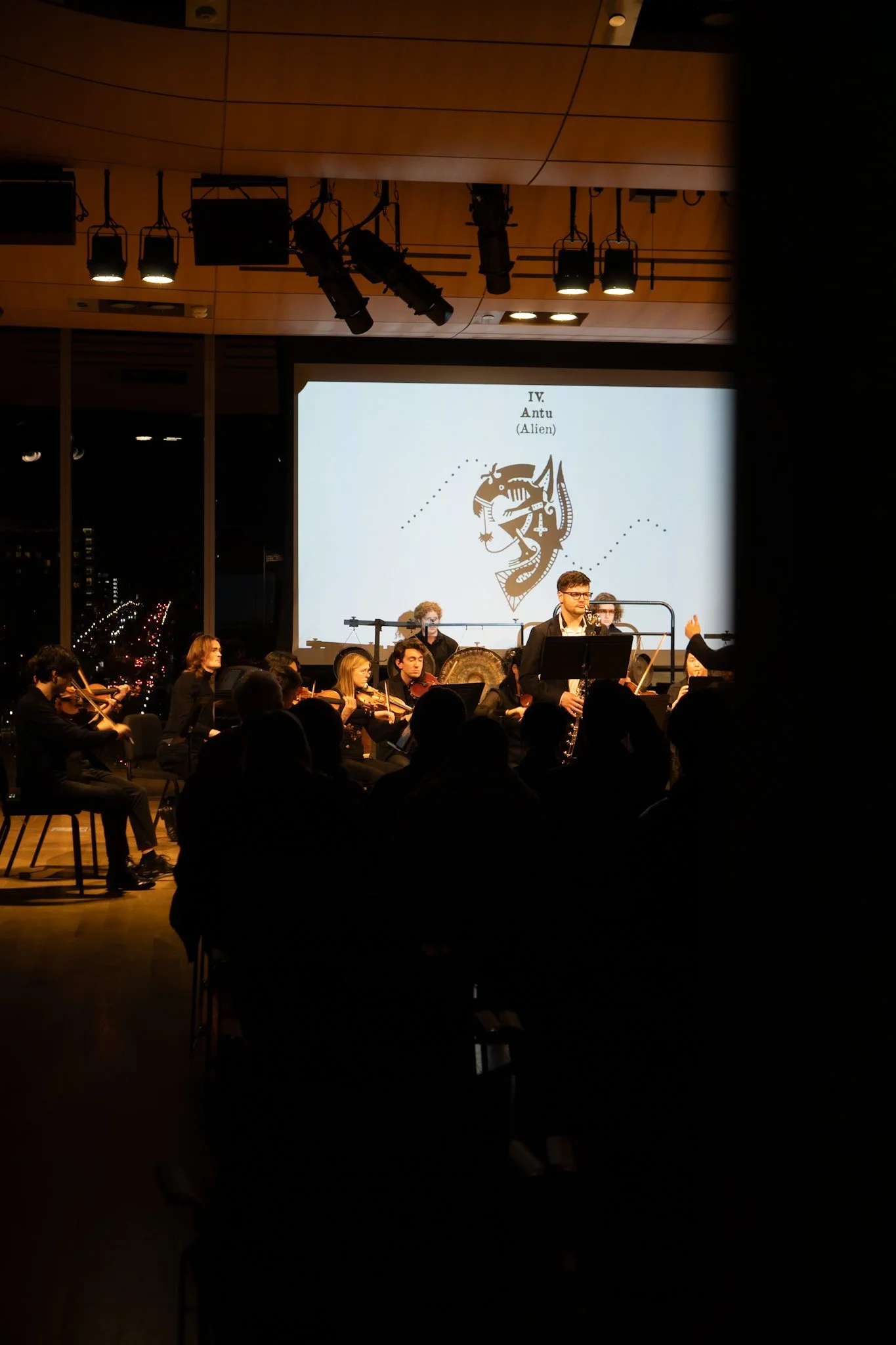
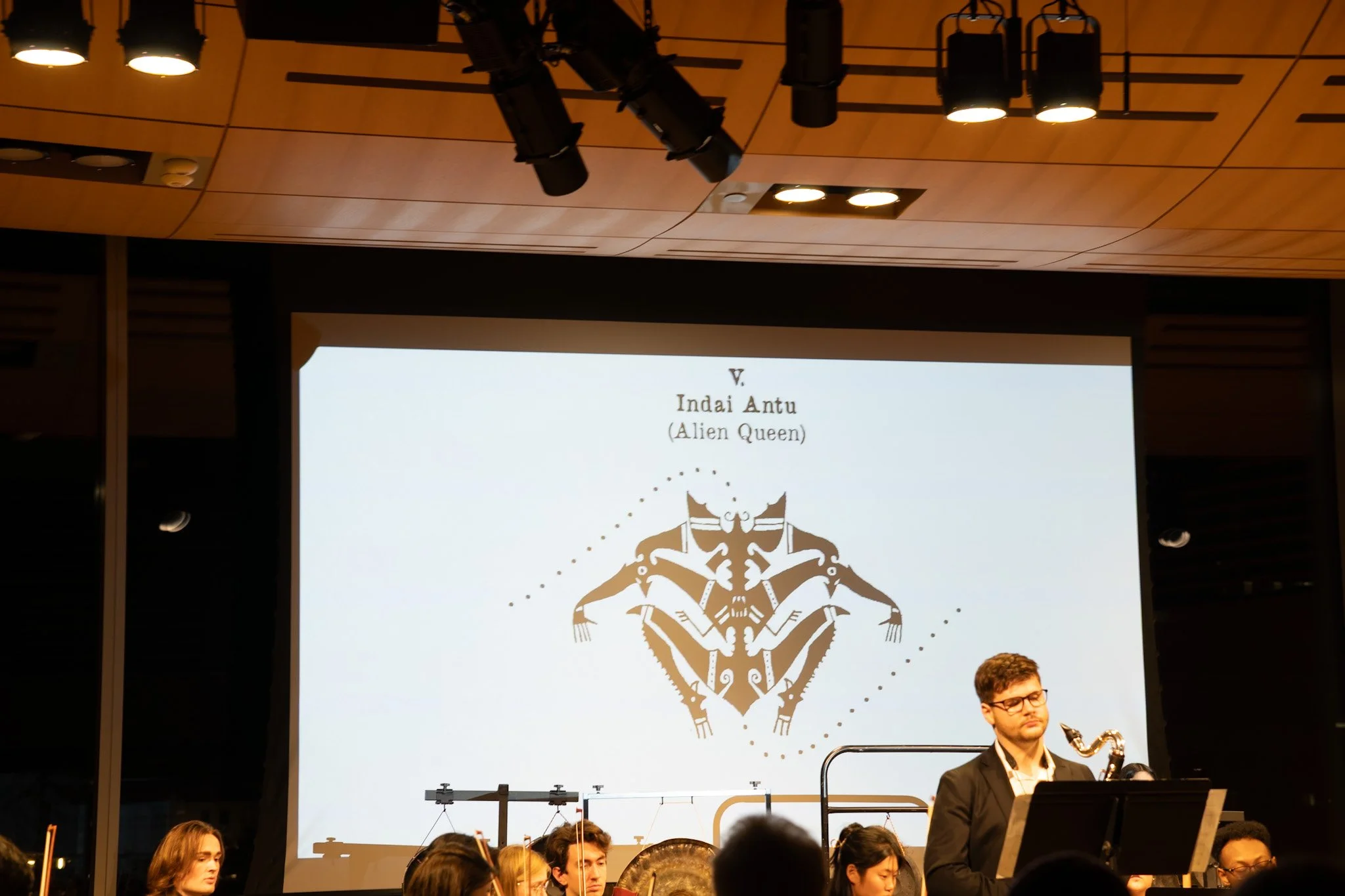
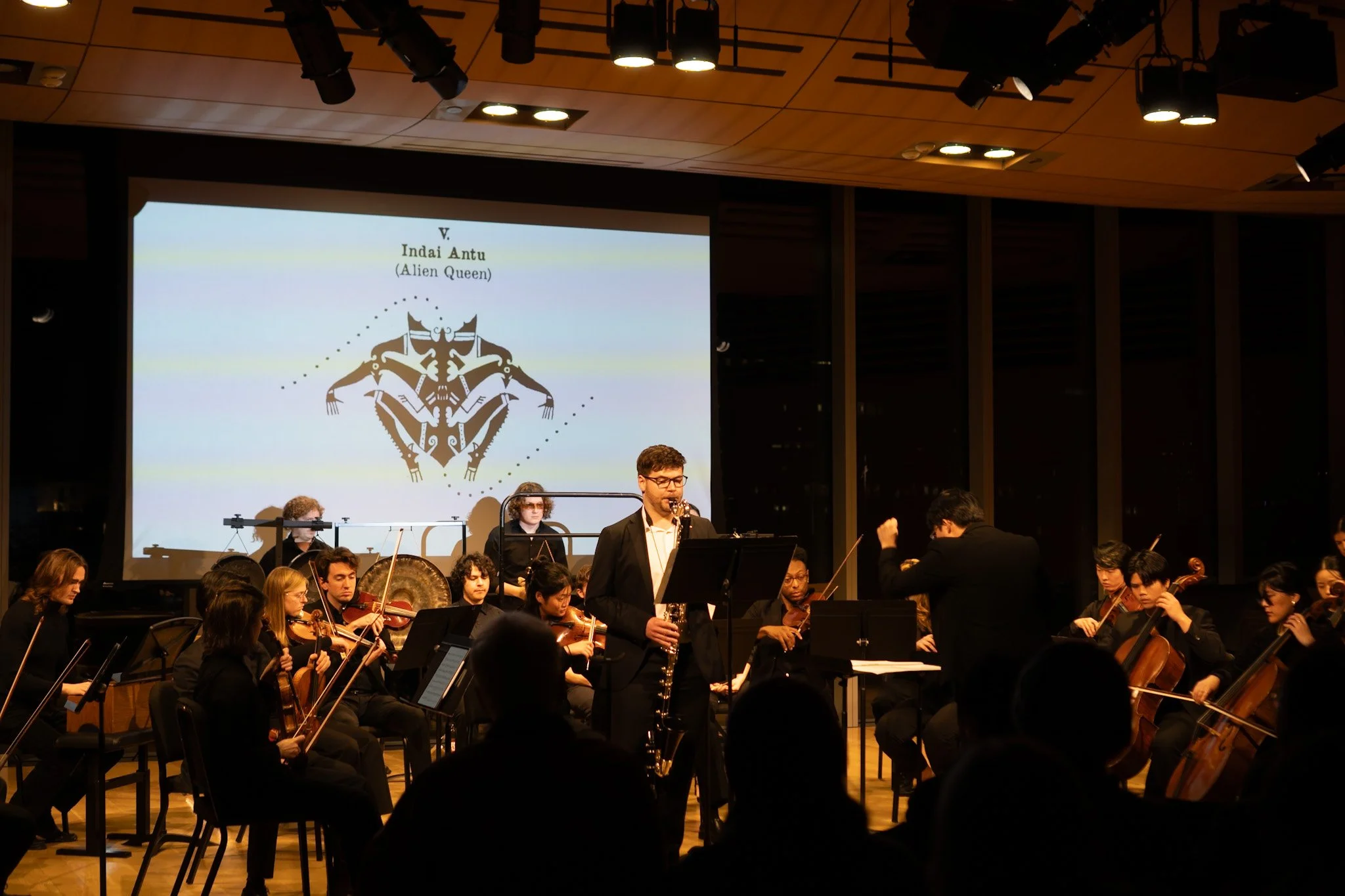

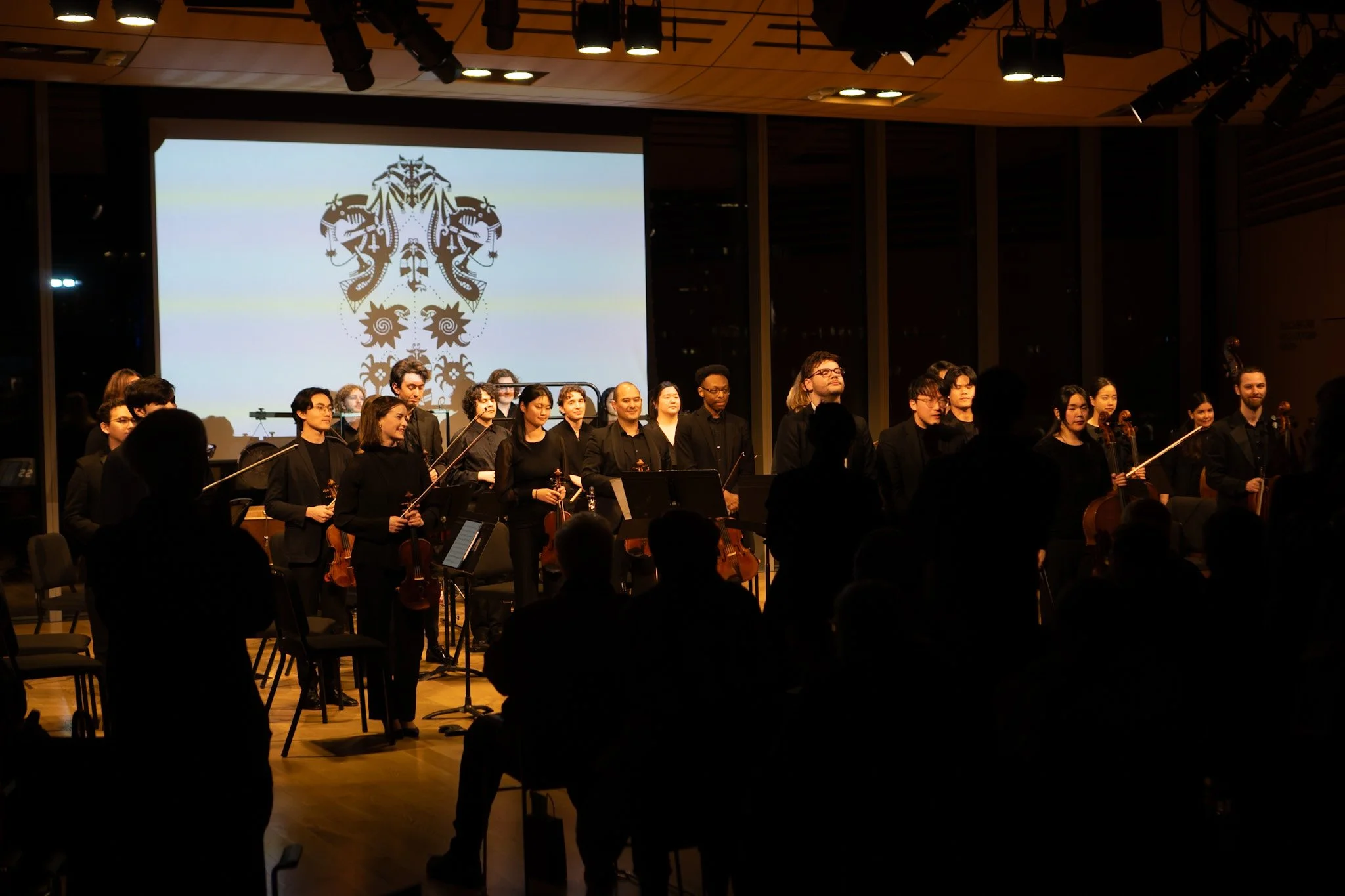
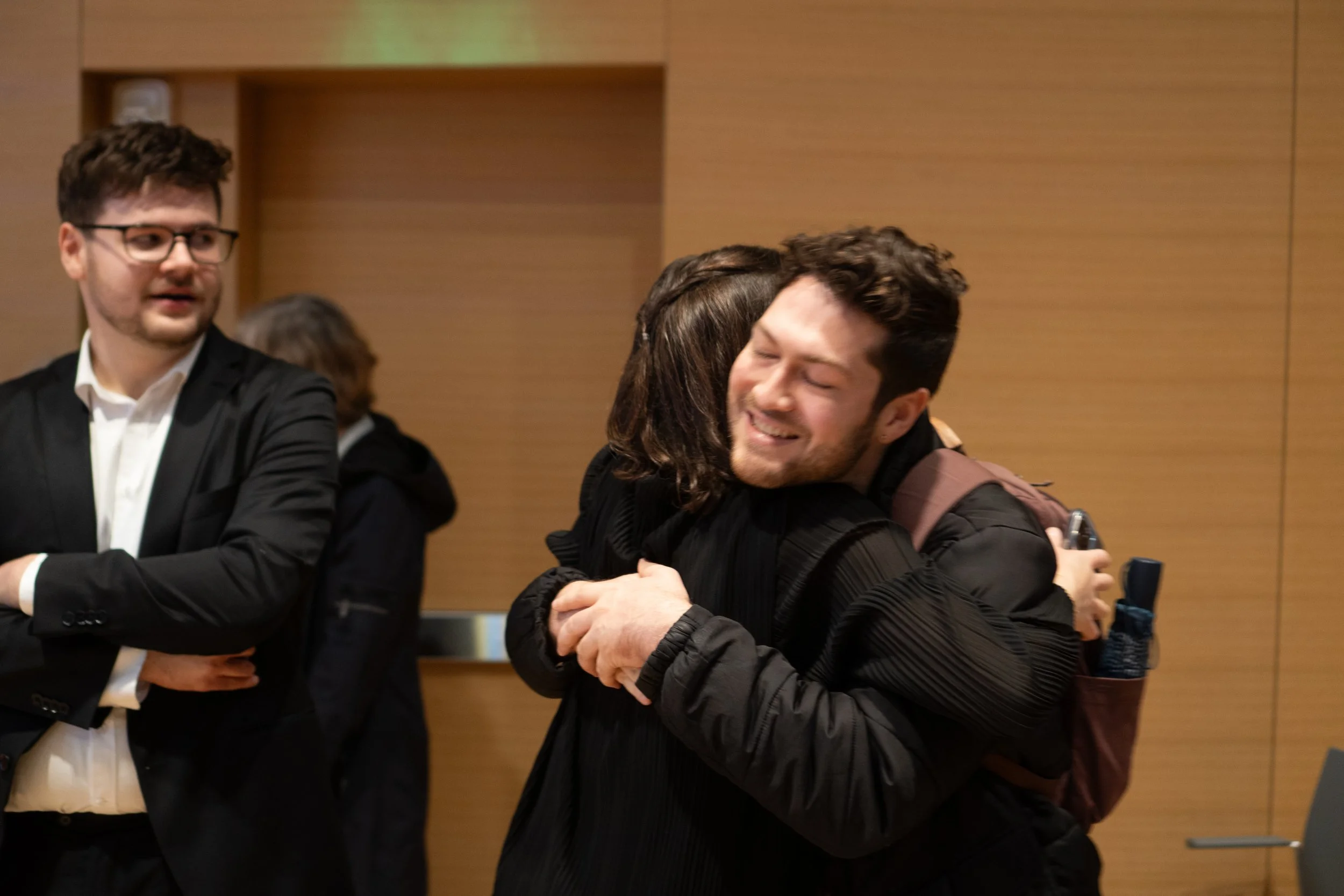
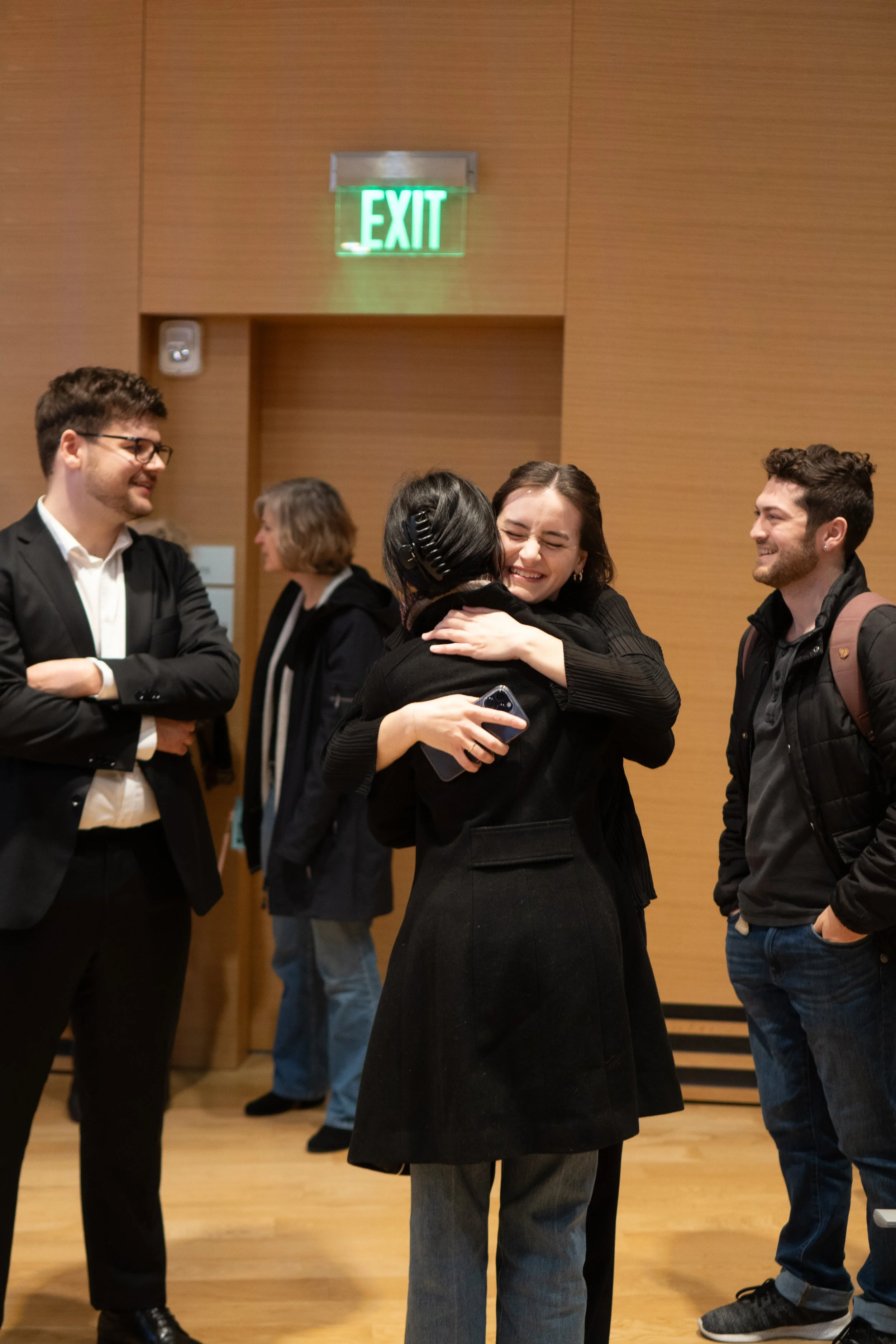
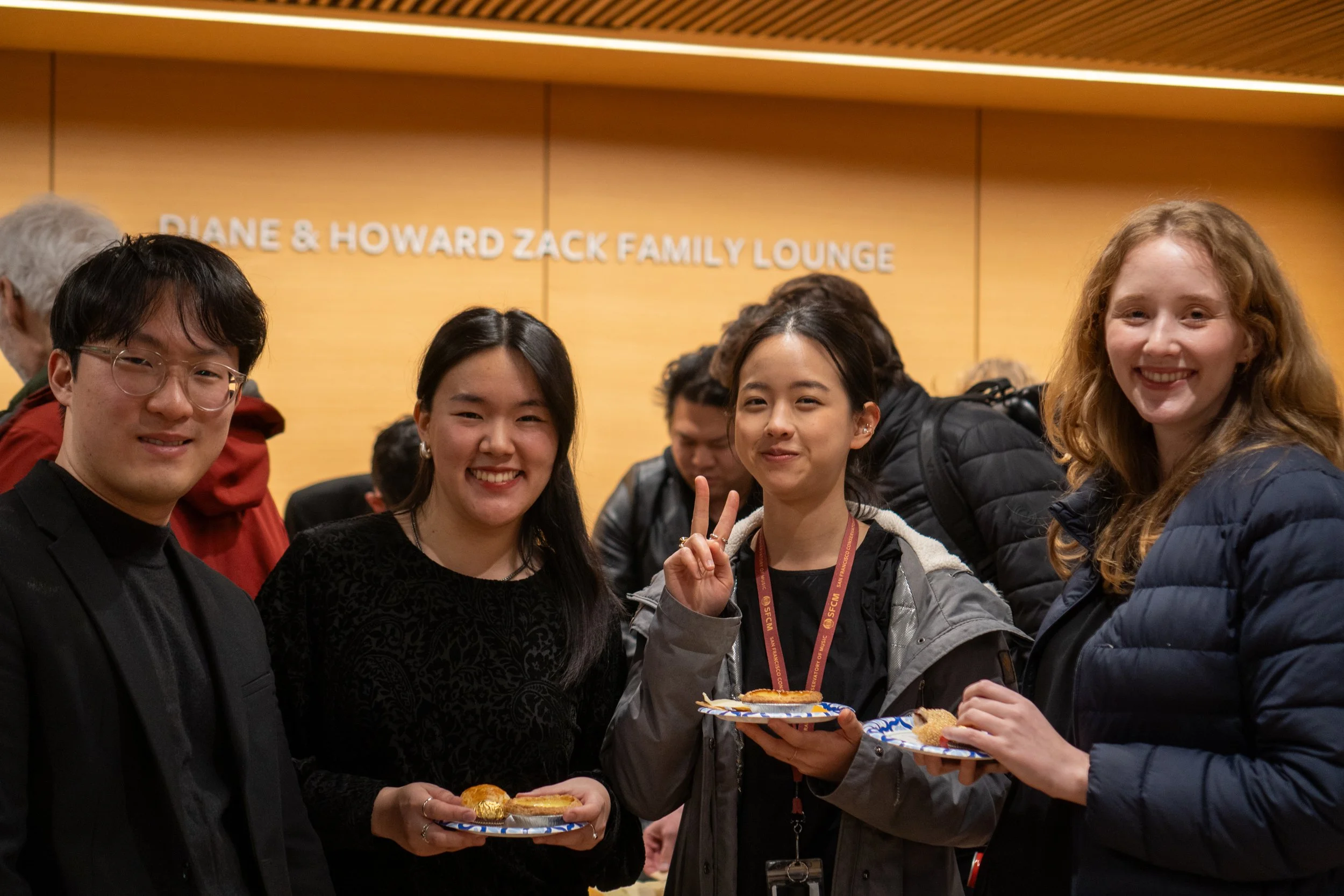
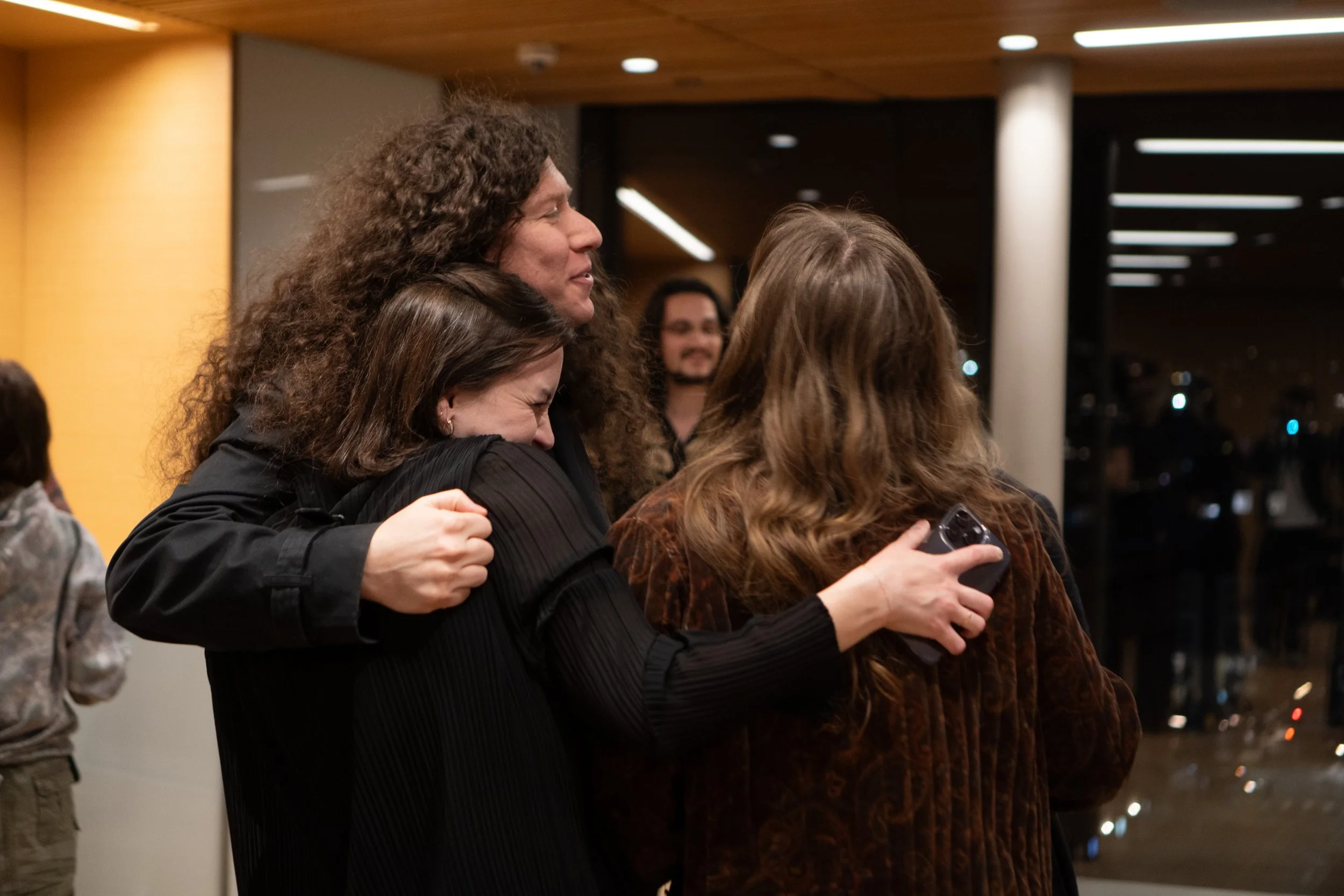
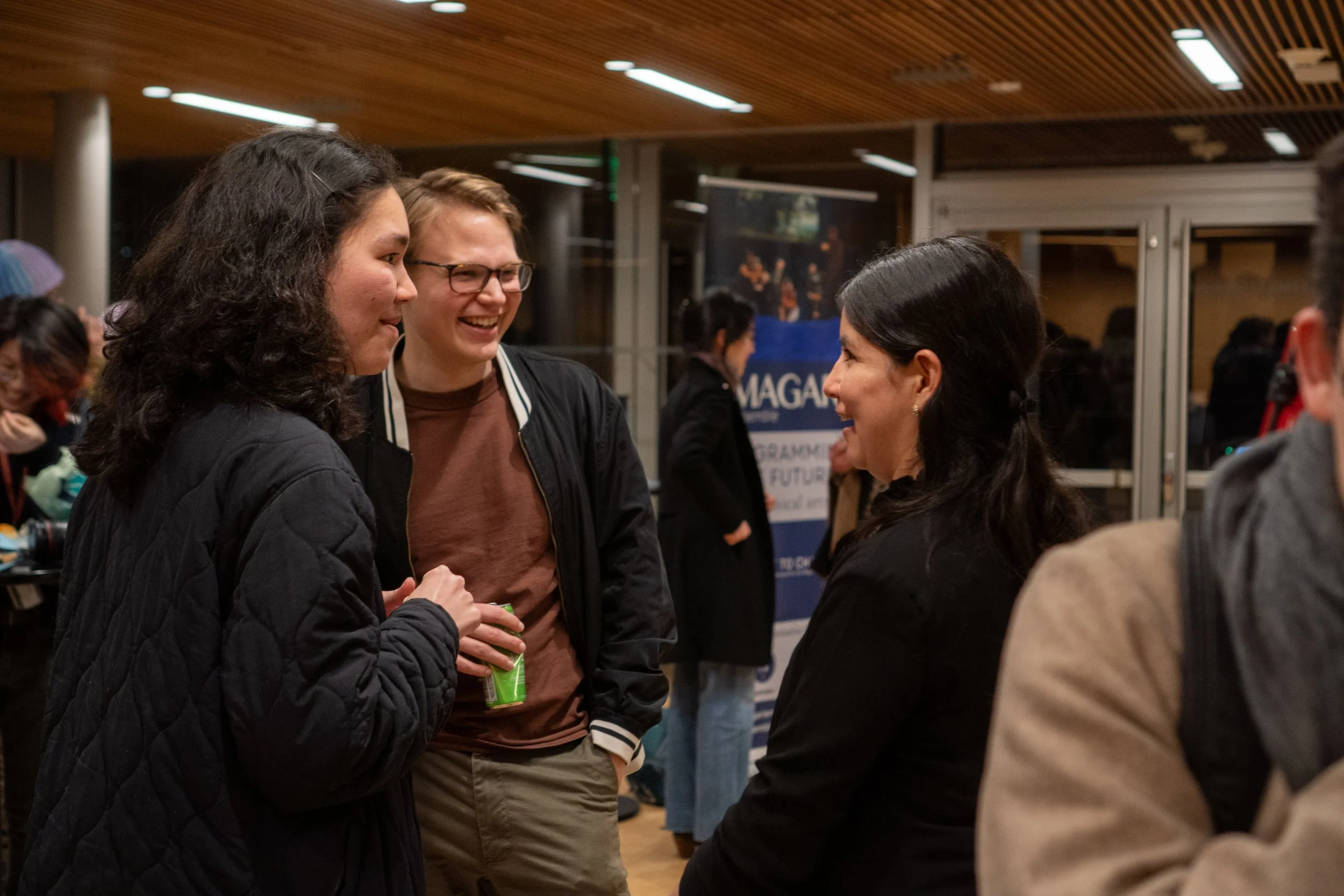
DeathCycle Collaborators
Composers
Rogan Tinsley
Leilehua Lanzilotti
Conductor
Sam Chung
Soloist
Liam Cameron
Visual Art
T. Bagak
Musicians
Violin
Natalie Boberg
Diego De la Cruz
Asher Blackburn
Aleksi Zaretsky
Jaimie Yoon
Ignacio Delfin
Jessica Folson
Christopher Jascewicz
Viola
Ella Hammersly
Armando Atanda
Josh Choi
Doris Du
Musicians
Cello
Calvin Kung
Vinci Chen
Julian Sommer
Zoe Lee
Bass
Lalita Perez
Flute
Alina Kwon
Ben Caroccio
Diego Rodriguez
Percussion
Brandon Topolski
Connor Yeackley
Isabel Armenta
Piano/Toy Piano
Thomas Stenzel
Pictures
Poyu Lee



